Discover our equestrian buckle department
THE LIST OF MATERIALS AND TOOLS
- Slat / ruler
- Strap cutter
- Round tip needles
- Brown braided nylon thread
- Lighter
- Cork
- Diamond awl / with pliers
- Tranchet
- Square lampshade
- Tree frog (or dry point compass if you don't have one)
- Pair of scissors
- Gum arabic brush
- Applicator for dye (felt in this case)
- Piece of old jeans
- Cookie cutter pliers
- Wooden mallet
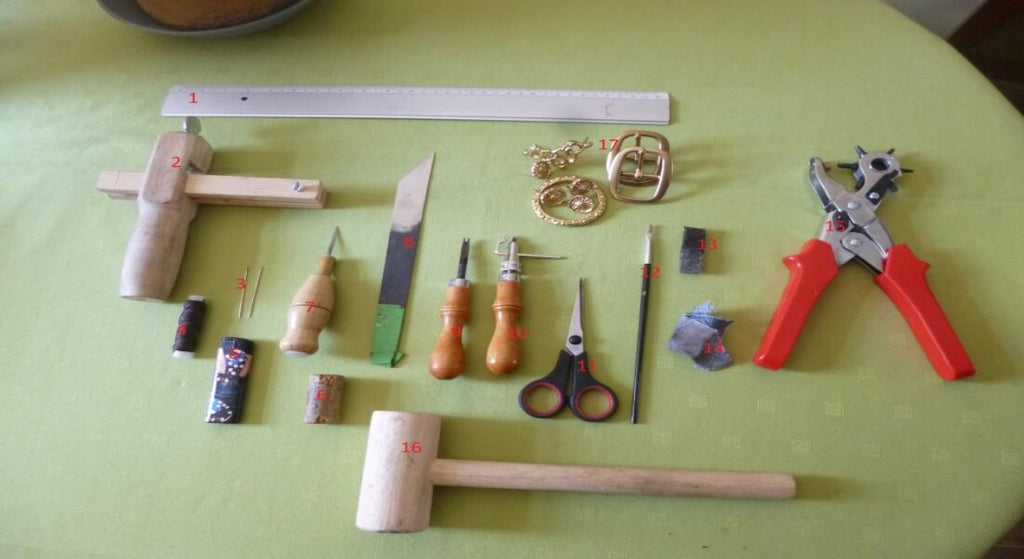
In this tutorial the tinted plant backset has a thickness of 5 mm. You can make your halter from 3-3.5mm leather without problem. Vegetable tanned leather should be preferred.
1. LEATHER TRIMMING - TECHNIQUE
- Trimming the leather allows you to refine the thickness of the leather at each end in order to avoid excess thickness when several layers of leather are superimposed. Trimming has a certain aesthetic purpose, but also prevents injury, and more particularly in our case here, from cutting the horse by a protruding corner.
- Take a slice and slide it at an angle from the inside to the outside, flesh side. If it is well sharpened, a simple cutting movement is enough for your leather to be finished.
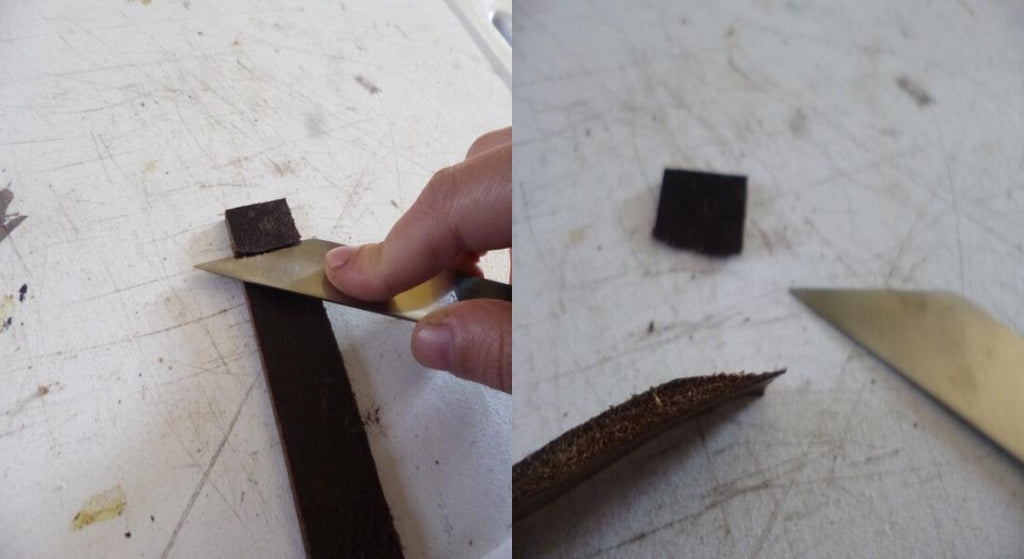
2. FINISHING THE SLICES - TECHNIQUE
Abat-square on the grain part of the leather but also on the flesh part of it. This allows you to break the corners so as not to hurt your mount.
One exception: when the leather folds on itself, you must not flatten the leather on the crust side. Otherwise between the 2 layers you will have a void, and dirt will slip in. 
Sand the edges then apply the stain using a stain applicator (be careful to use a water-based stain and not an edge finish otherwise the gum tragacanth will not be compatible).
Cover the slices generously, taking care not to spill onto the already tinted leather. 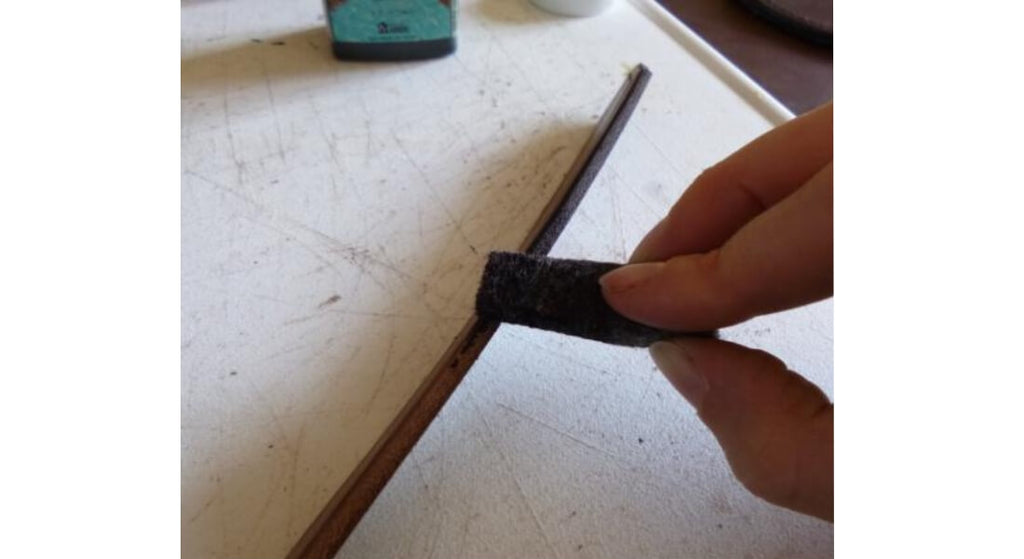
Take a brush or dye applicator, and cover the slices generously, taking care not to spill onto the grain of the leather. Wait a few moments, change brushes and apply gum arabic. 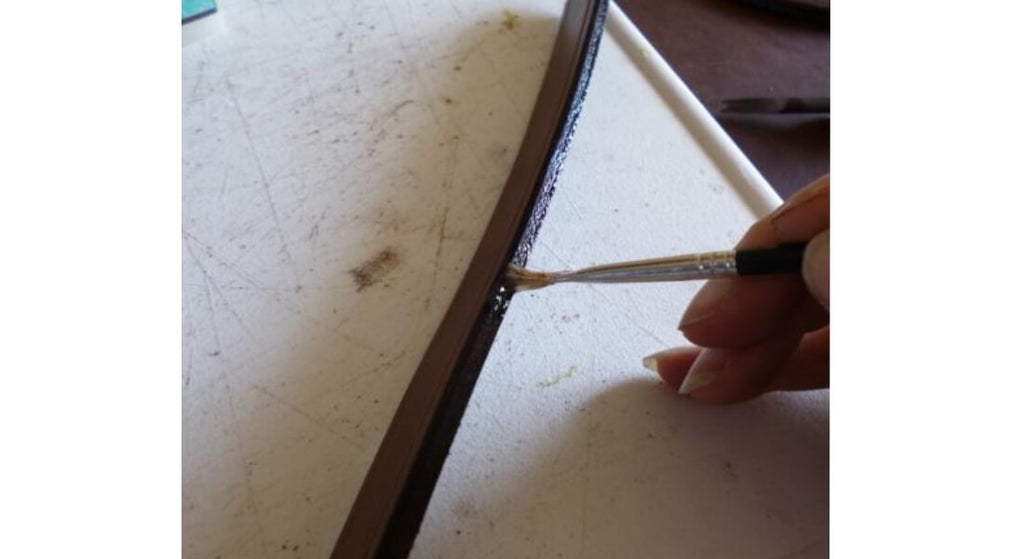 Take a piece of old jeans or a cloth and vigorously rub the edge of your leather. Proceed by small distance, the aim being to heat the jeans which in turn will heat the rubber, allowing it to properly impregnate the leather and give you a nice shiny appearance.
Take a piece of old jeans or a cloth and vigorously rub the edge of your leather. Proceed by small distance, the aim being to heat the jeans which in turn will heat the rubber, allowing it to properly impregnate the leather and give you a nice shiny appearance. 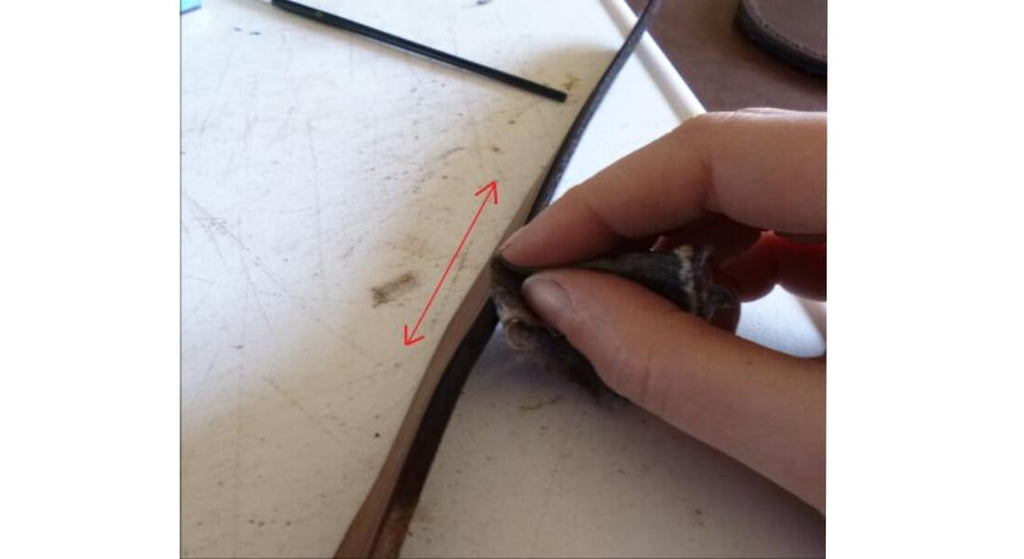
3. LEATHER SEWING – TECHNIQUE
You don't want a beautiful halter with crooked seams do you? Practice saddle stitch sewing!
Then mark the sewing points with a marking wheel.
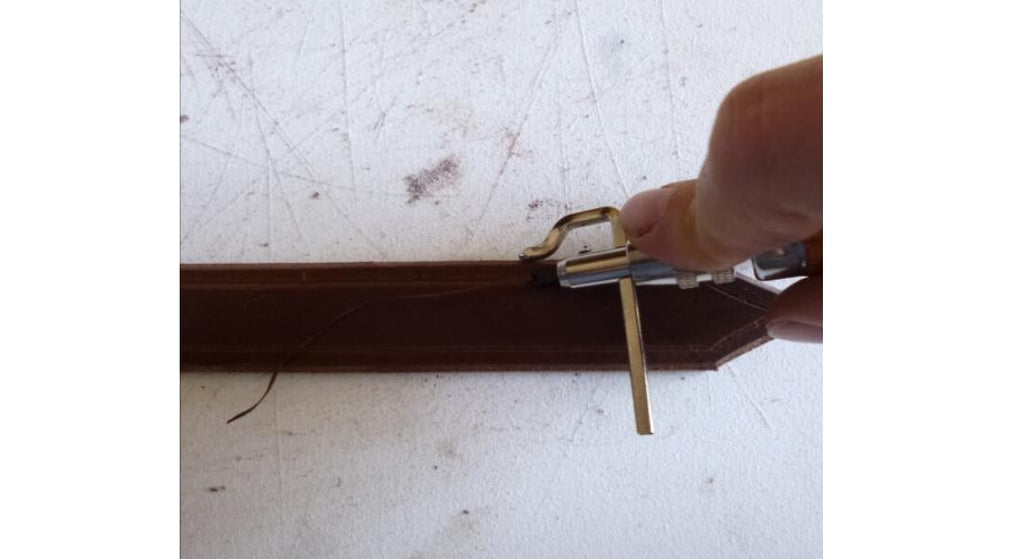
Place the pieces of leather to be assembled in the saddle pliers/sewing pliers. The seam line should be visible but as close as possible to the dart. Your thigh presses down on the pliers, trapping everything between his jaws. 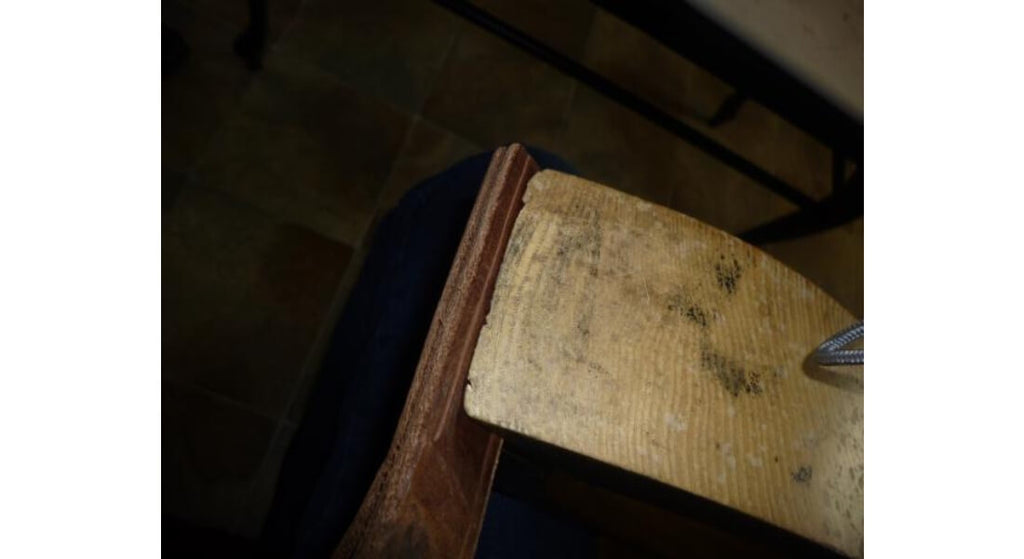
Thread a needle on each side of your thread: pass the end of the thread through the cat of the needle, bend the thread to the tip of the needle, and insert the latter through the thread. Pull the needle so that it goes through completely. Do this on both sides of the wire.
Notes : the length of the wire will be at most the length between your two outstretched arms. Using a longer thread is an aberration. It is completely normal to end up with a thread that is too short for large pieces to be sewn. When this is the case, you must go back 2 to 3 points with your thread and resume sewing at the last point towards you with your new thread. 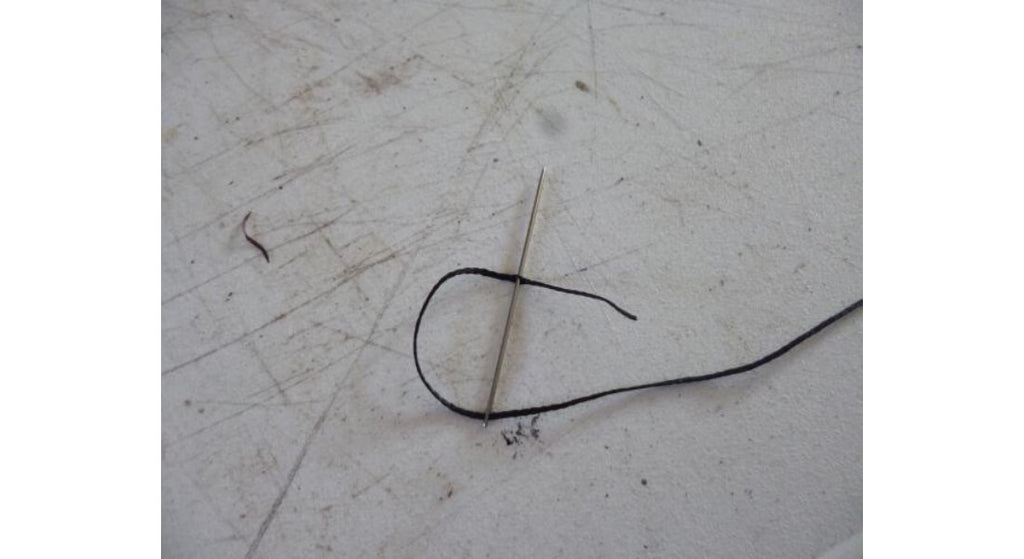
For the first stitch:
Drill two holes using a diamond awl. The seam is done from the knees towards you. 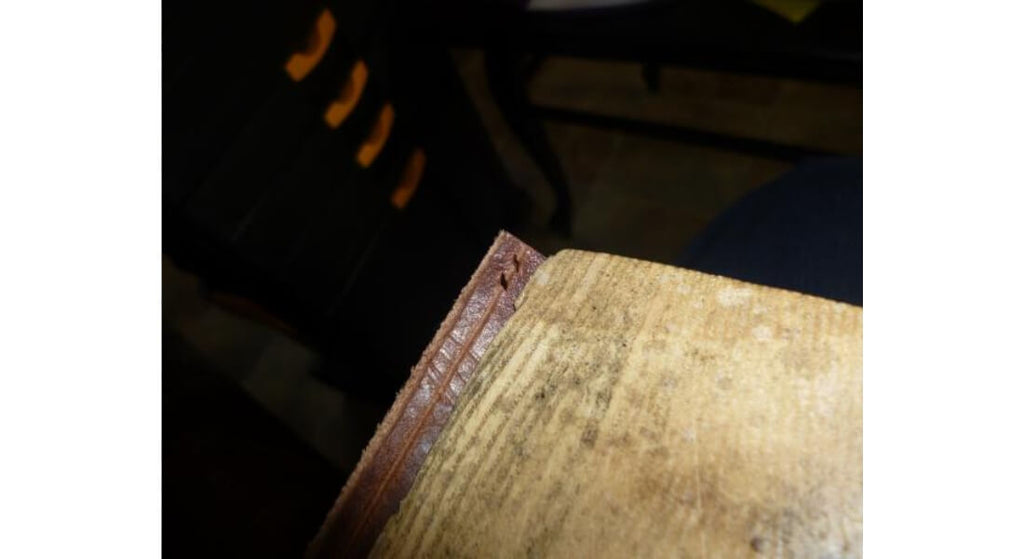
Here is a diagram of the correct angle of the awl hole and placement of needles in a sewing hole. 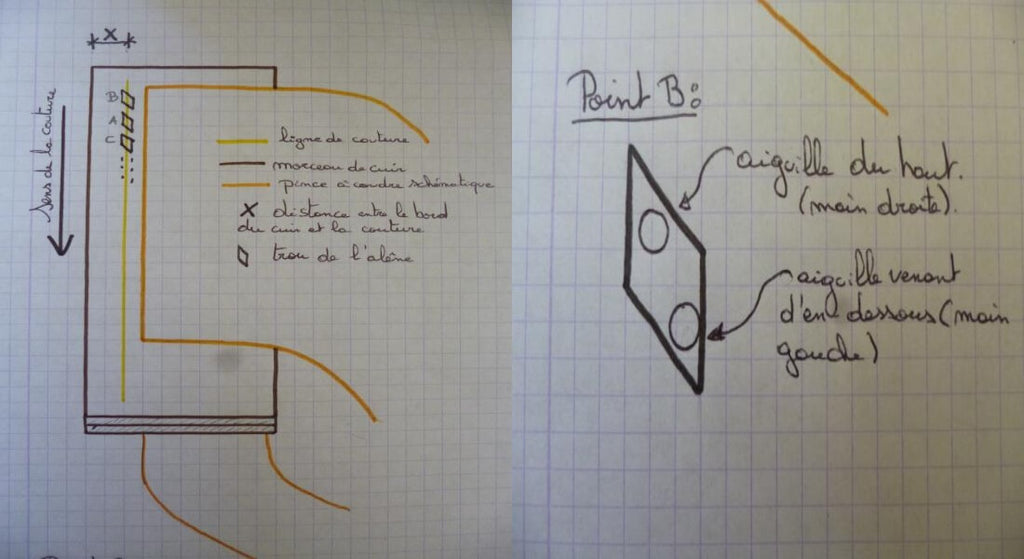
Tip : Place a cork under the leather, where the awl will pierce it. This allows you to hold the leather correctly and drill straight, without injuring yourself. 
Pass the thread through hole A (see diagram) and arrange to have the same distance of thread in both hands. 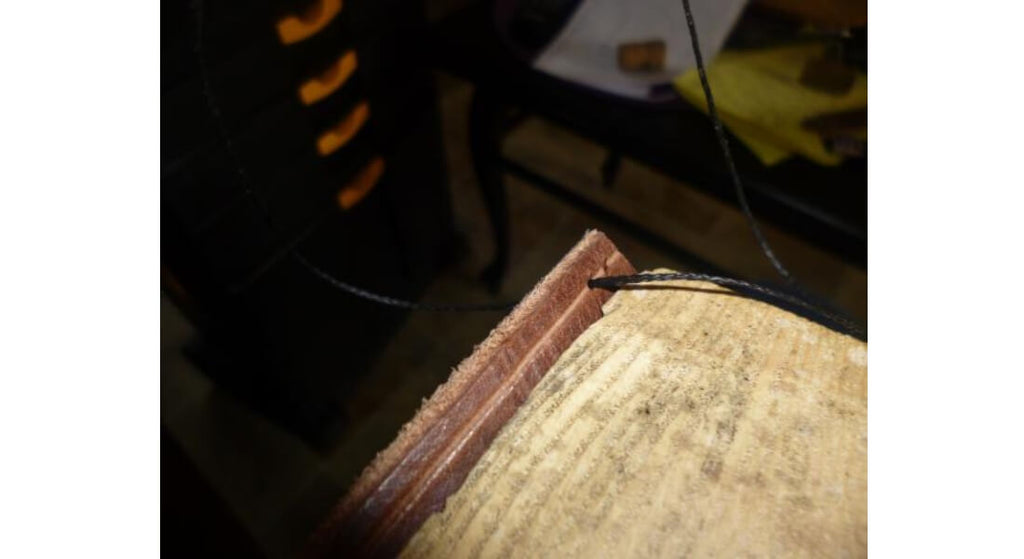
With your left hand, pass the needle through hole B (from below the leather), towards you in the hole. With your right hand insert the needle into the same hole (B), but this time, as far away from you as possible in the hole. (See diagram)
Both needles should be inserted into the hole at the same time, before pulling on the thread. 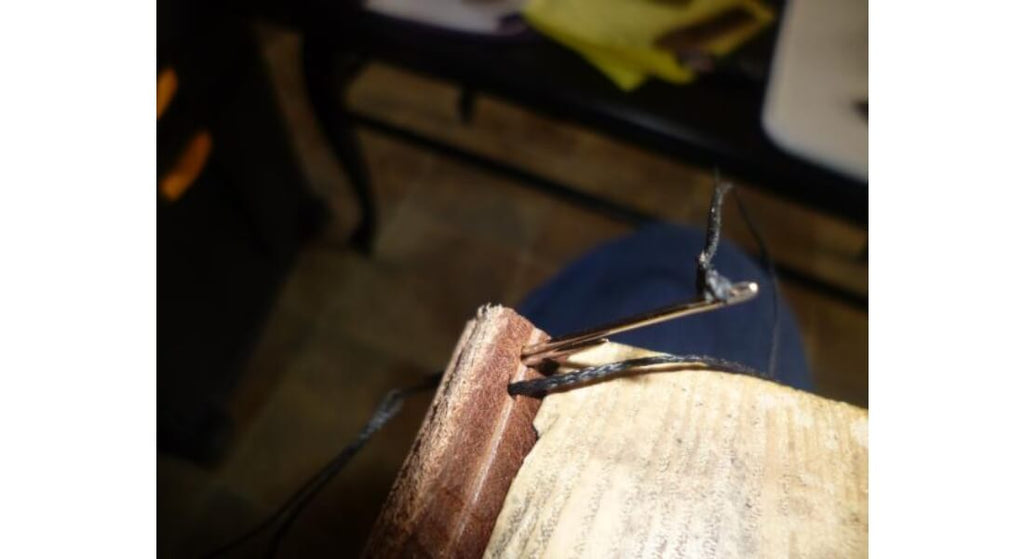
Pull on the needles. Be careful to have the same thread tension in your left hand and your right hand.
Tip: Push the thread with your thumbs to slide the needles, and not on the needles. This will prevent you from getting pricked when the needles cross.
Go back to hole A in the same way. The needles in the same direction. Your first point is made. 
Go to point C and continue to the last point. 
Backing stitch: pass the needles through the last stitch and go back in the same way.  Cut the two threads, leaving a few millimeters.
Cut the two threads, leaving a few millimeters. 
Burn the ends of the wires with a lighter, then when the nylon is melted, flatten the wires. 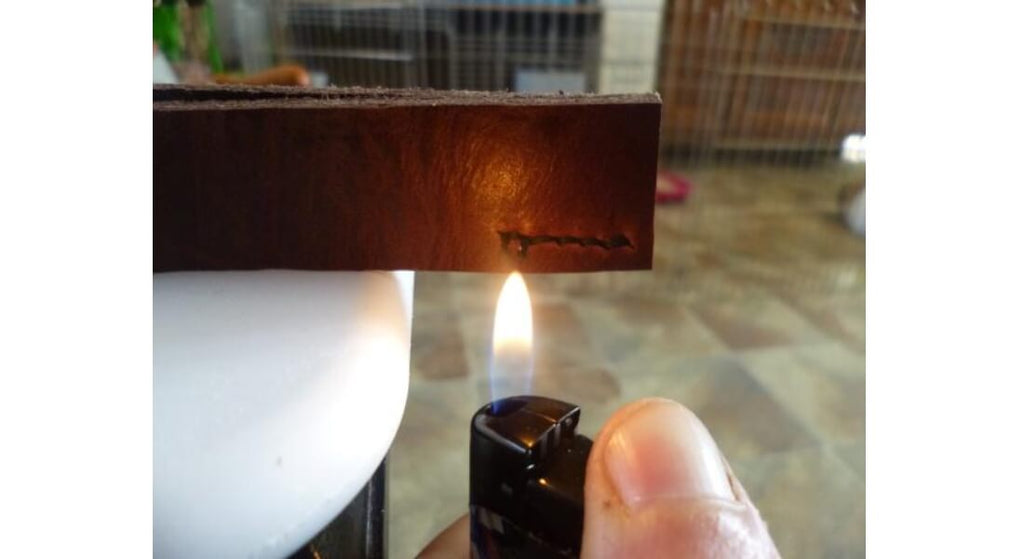 It can be observed here that the melted and flattened wire will prevent the wire from unraveling. This is more aesthetic and takes up less space than a double knot.
It can be observed here that the melted and flattened wire will prevent the wire from unraveling. This is more aesthetic and takes up less space than a double knot. 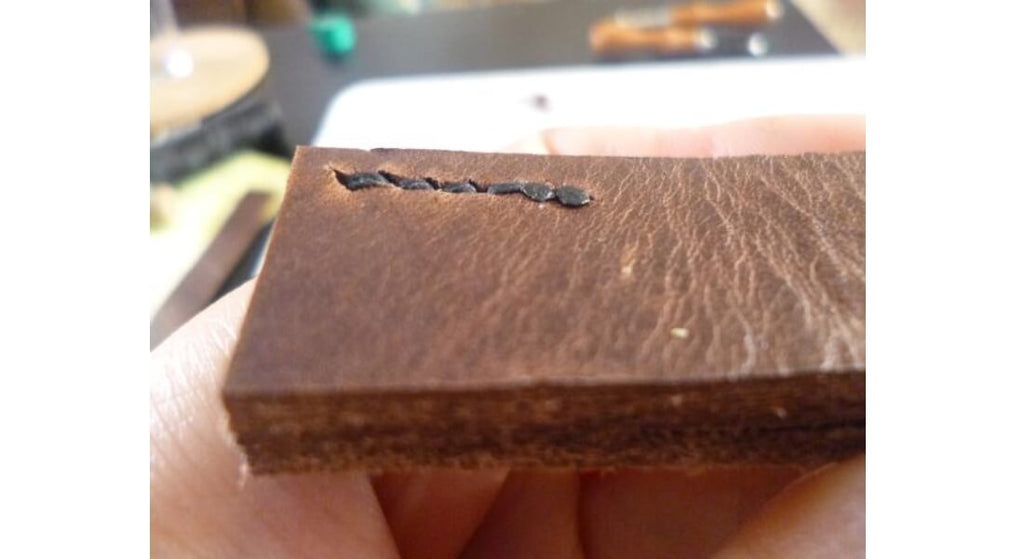 Final step: hammer the seam.
Final step: hammer the seam.
Take a riveting hammer or joining hammer and hit your seam. Be careful to hit it flat. 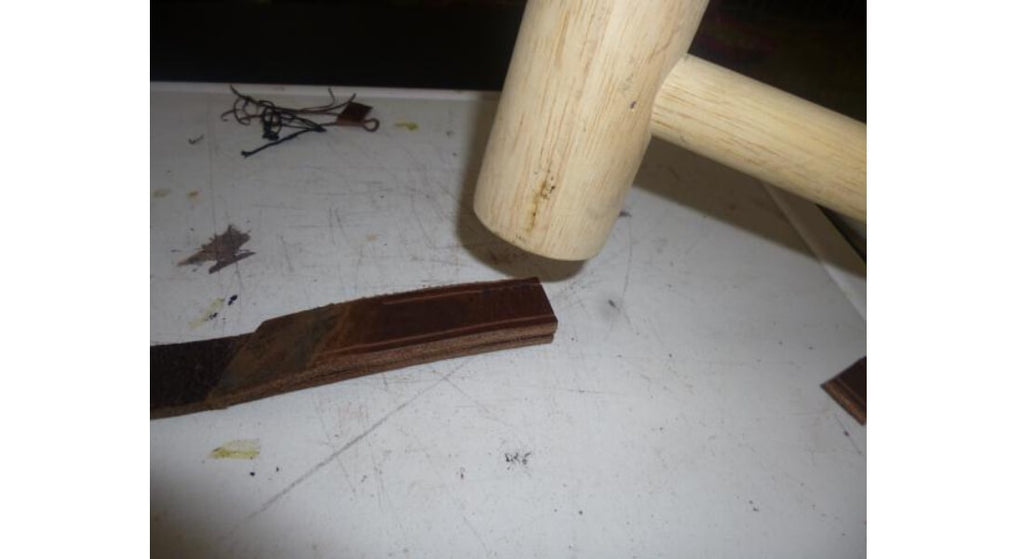
4. MAKE THE HALTER - TUTORIAL
Either prepare all of your pieces before sewing, or prepare them one at a time. Here we will deal with them one after the other for a better understanding.
We will use the following terms:
LF = finished length of the piece of leather, in centimeter
LC= cutting length / leather length, in centimeter
The measurements used are "full size", however it is preferable to take your measurements on a halter at home, and adapt the measurements that follow.
The noseband and the amounts will be tailor-made according to the pattern that you have made according to your taste. In this case they were made from scrap vinyl, flexible and easy to cut.
The under beard, under the throat, the wedding ring, the 2 loops will be 25mm wide. As a result you can cut yourself a length of leather 25mm wide. Depending on the size of your skin, you may need a second one. Please note that you will need approximately 315 cm long.
The sewing lines will be made 4 or 5 mm from the edge of the leather, depending on your convenience. Each sewn piece can be glued in advance with your neoprene glue (or any other glue that can stick leather). But this step is never obligatory.
5. DO THE HEADREST
This headrest will be doubled. Once the piece is cut, make a saddle point. Try to have a tip tip +/- 1/3 of the width of your piece.
LF = 60 cm
LC = 60 cm + 60 cm + 1 cm for covering the ring = 121 cm in leather length by 25 mm in width. 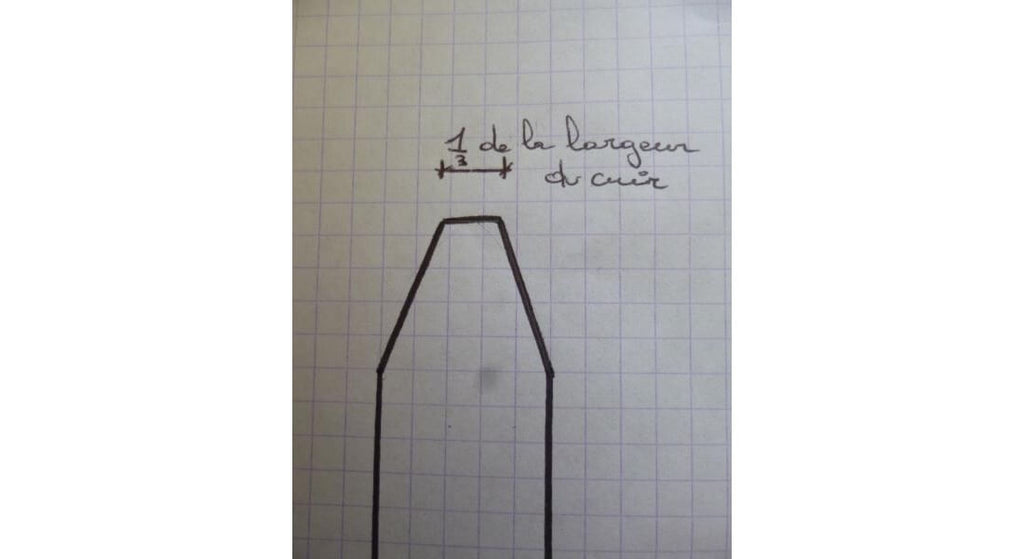
- Fold the leather in half to make the same point on the other side of the headrest.
- Unfold
- Place the shade on the flower side (and not on the flesh side, since the piece is lined), tint and apply gum arabic.
- Trace the seam line all around the edge.
- Fold the leather in half again, tap the fold with a mallet and insert the ring into the fold.
If your leather is not of very good quality, remember to moisten the curvature of the leather before folding it, to prevent the grain of the leather from cracking.  Sew, starting at the ring and following the seam line.
Sew, starting at the ring and following the seam line. 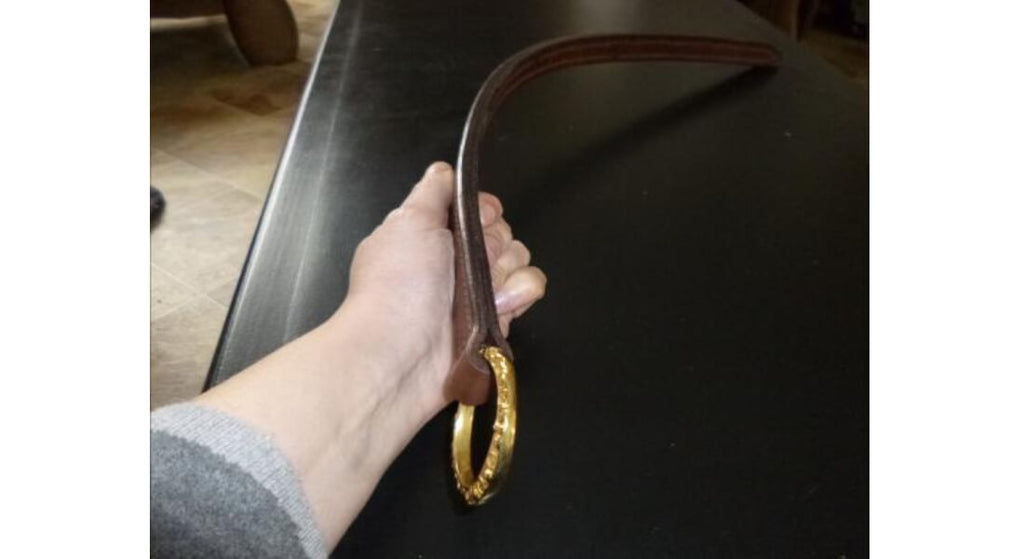
6. THE NOZZLE AND THE 2 UPRIGHTS
Take your noseband pattern and the amounts, and transfer them to the piece of leather using a fine steel point, or simply a round awl.
Don't forget that the halter is made up of two amounts, so you must put it on twice.
- Cut the 3 pieces following the line using your slicer. Be thorough.
- Also cut out a rectangle of 26 cm x 10 cm and 2 others of 14.5 cm x 6 cm

- Trim the ends of the noseband, the ends of the uprights as well as each end of the rectangles.
- Pass the lampshade on the flower side over all the pieces except the rectangular ones, tint, rub the gum arabic and make your sewing lines
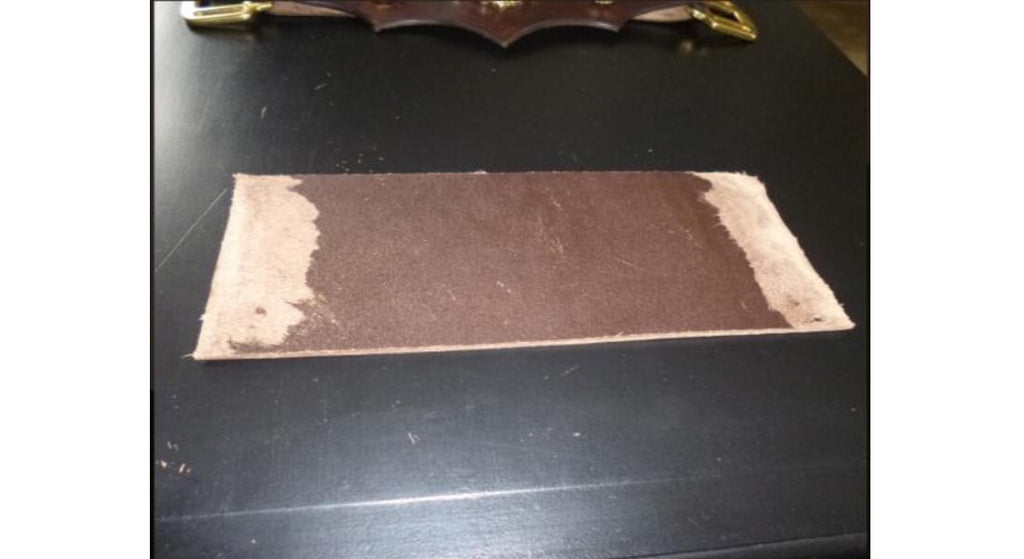
- Place the decorations on the noseband as well as on the uprights. If they are folding points as in this case, fold them towards the inside of the decoration.
- Insert the halter squares into the noseband and fold the two ends inward.
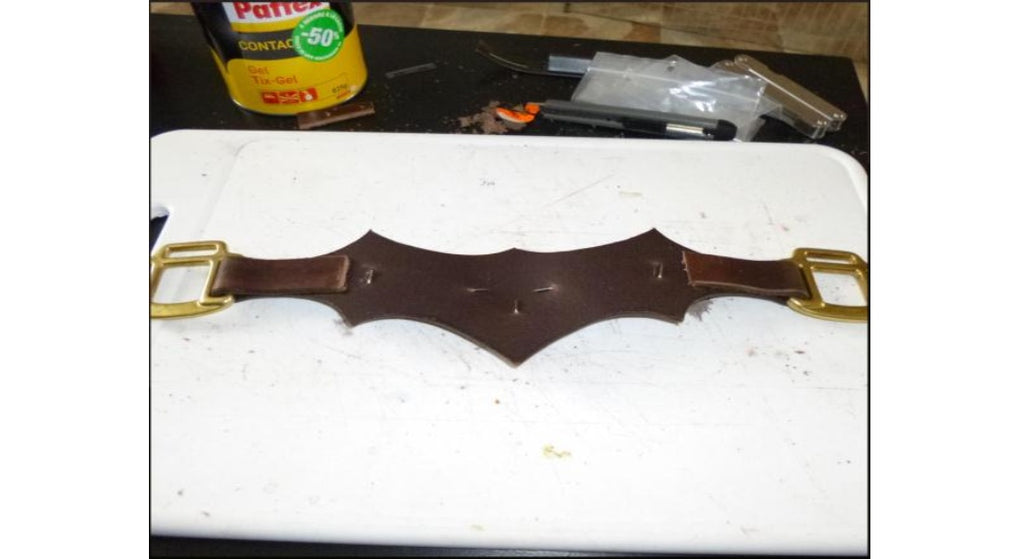
- Take the largest rectangle and place it against the noseband.
It must arrive as much as possible towards the squares. Is it too short? You will have to bend the noseband to sew, the inside side is therefore smaller than the outside side (the visible side). If your rectangle is not short enough, you must shorten it without forgetting to trim the shortened side again. This allows you to have a presentable halter, curved noseband and not flat.
We strongly advise you to stick to this step, it will make sewing much easier. 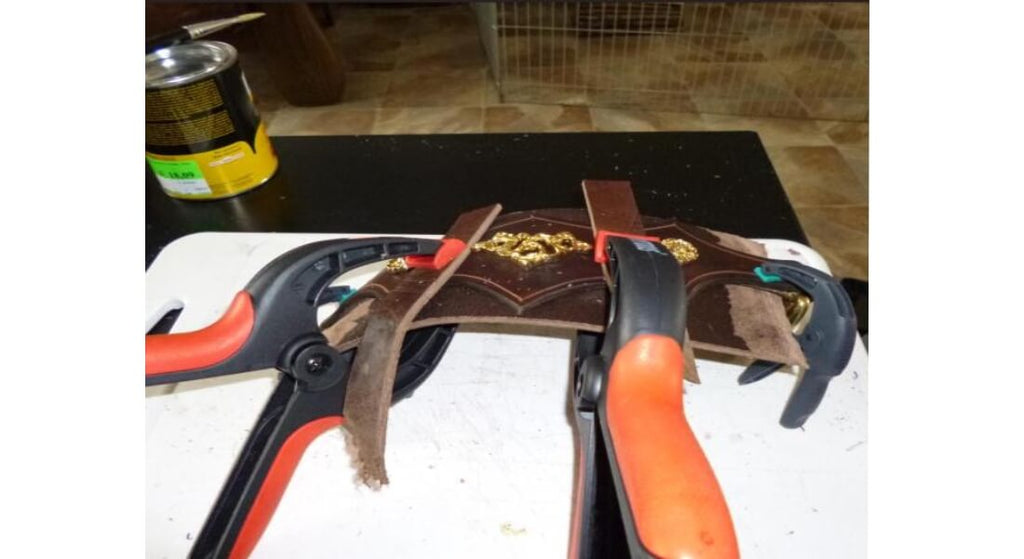
Sew from one square to the next following your line. Be careful not to insert your decorations into your pliers as this could damage them. 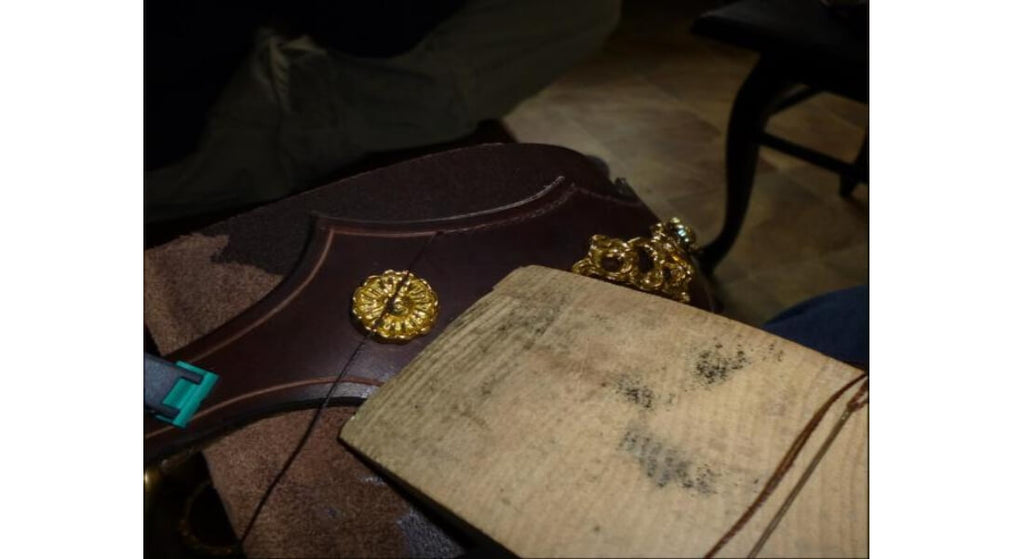
Once the bottom and top of the noseband have been sewn together, cut off the excess leather with a knife.
The leather being soft enough for this, lay the noseband flat for the cuts. 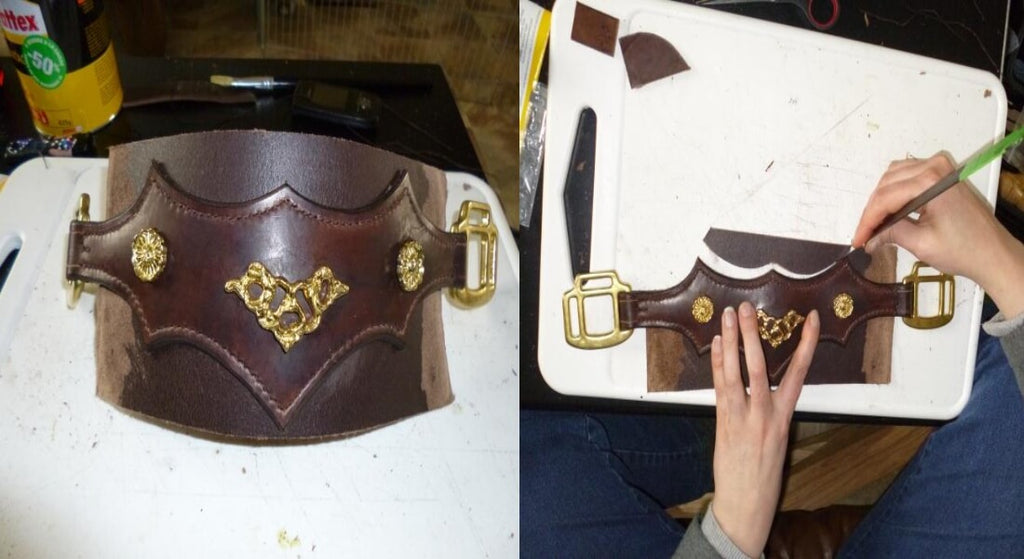
This process allows you to have your curves at the back perfectly identical to those at the front, something impossible with prior cutting before sewing, there are always differences to be rectified. The 2nd layer of leather at the back is mandatory for strength but also to prevent the horse's skin from rubbing against the nails or rivets of the decorations put in place. 
Shade, sand, tint the edges then apply gum arabic. 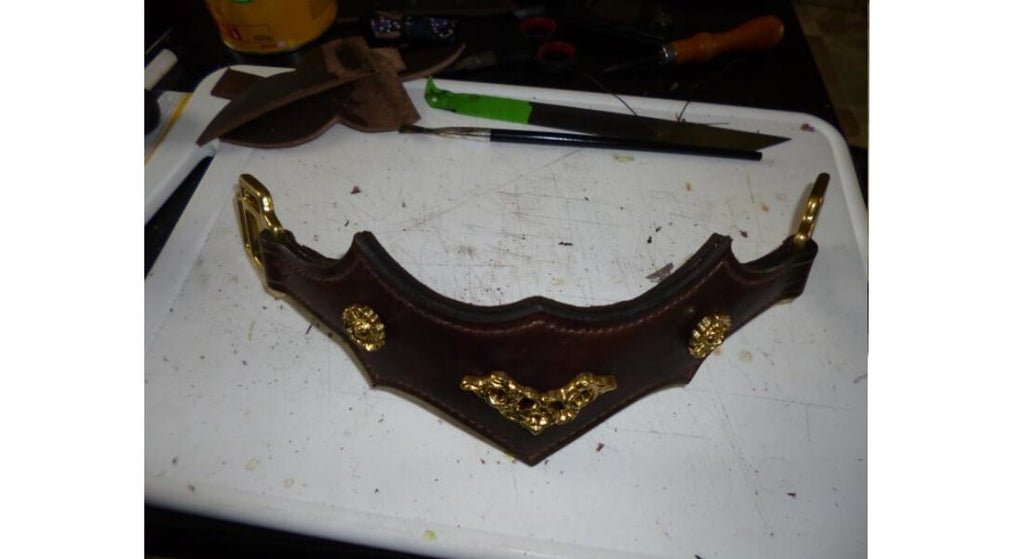 Follow the same steps for both uprights. Attention: on the other hand, they must not be curved and therefore the rectangles must arrive as close as possible to the halter squares!
Follow the same steps for both uprights. Attention: on the other hand, they must not be curved and therefore the rectangles must arrive as close as possible to the halter squares! 
7. THE UNDERBEARD
FL = 31
LC = 31 + 6 cm back + 1 cm to cover the square = 38 cm.
Make a saddle stitch on one side, and trim the other end (flesh side).
Pass the blind on both sides (except the flesh side on the 6 cm flap), tint and apply gum arabic.
Trace the seam line. 
Pass the flap through the halter square and sew.
Make holes with the cookie cutter pliers as well as on the faceplate. 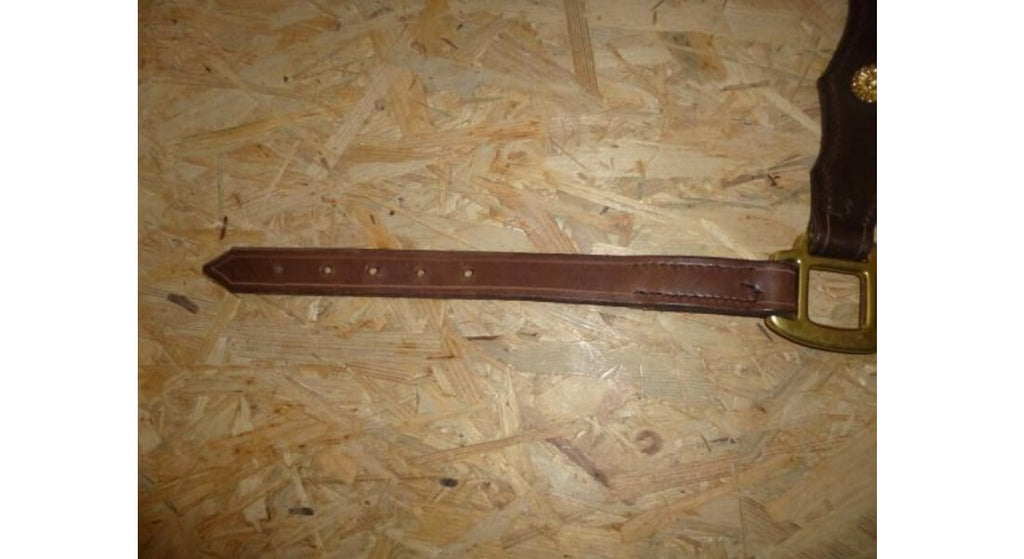
8. THE UNDERTHROAT
LF = 40 cm
LC = 40 + (2 x 6 cm back) + (2 x 1 cm to coat the rings) = 54 cm
- Trim both sides, finish the slices by passing the giblet everywhere (except on the flesh side of the two flaps), tint and apply gum arabic. Don't forget the seam lines.
- Pass each flap around the ring and sew.
Note: On the left side of the horse (or even on both sides) you can add a carabiner which will attach to the ring. Deduct the size of the carabiner from the LC. If you choose this option, choose a carabiner that does not rotate. Those with an axis of rotation are much less solid. 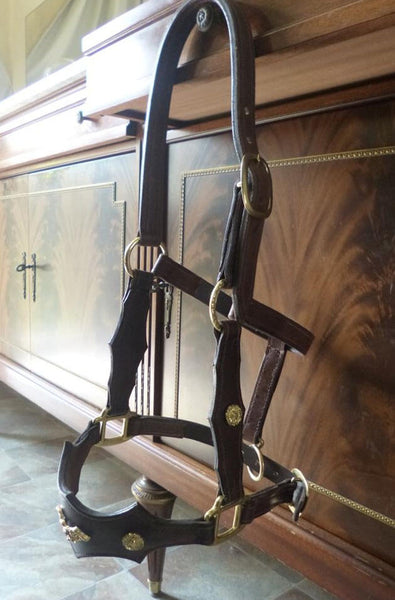
9. THE TWO BOUCLETEAUX
LF = 10 cm
CL = 30 cm
To be reproduced in duplicate.
The chainstay will be 6 mm wide and 2.4 cm long. (Oblong-shaped hole where the pin of your buckle is inserted). These measurements may differ depending on your buckle.
- Trim both ends
- Finishing the slices
- Trace the seam line
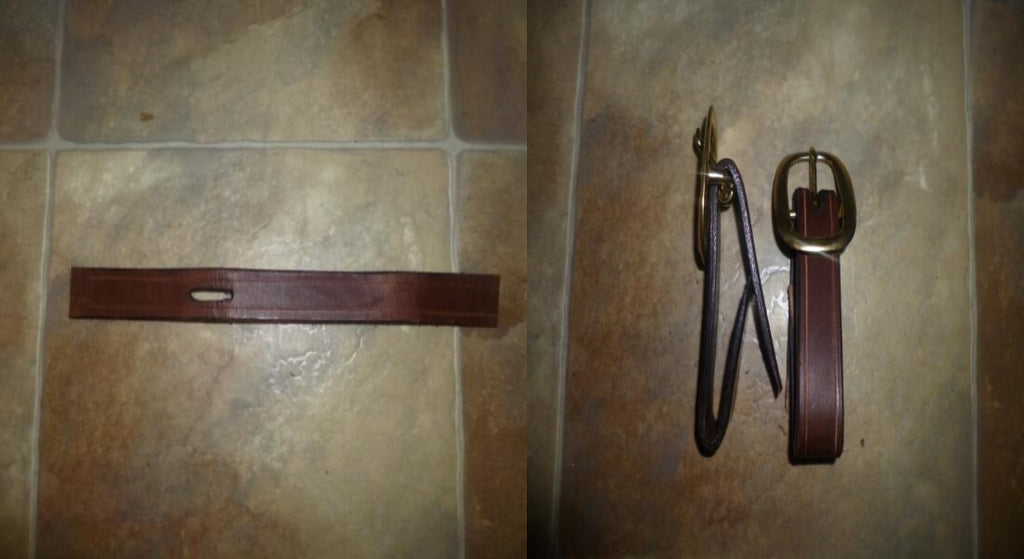
- Sew one to the ring on the left side of the horse to receive the headpiece, and the other to the halter square on the left side of the horse, to receive the underbeard.
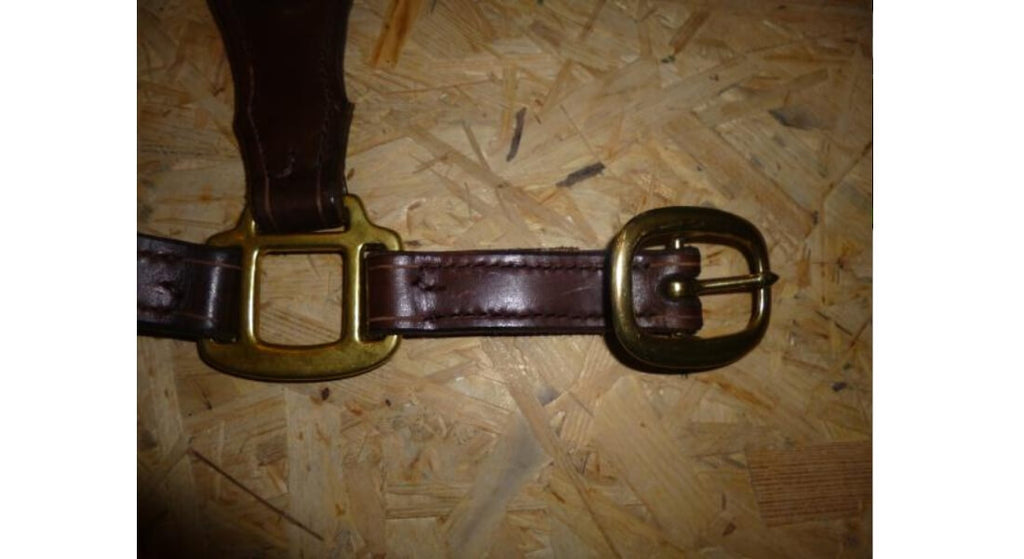
10. THE COVENANT
The LF of the wedding ring has the same finished measurement as the uprights or 1 cm less. On this halter we use a ring + triangle, we must therefore deduct the dimension of this from the LF.
LF = 18 cm (including ring)
LC = 39 cm
Trim the 2 ends on the flesh side, finish the slices, trace the seam lines, fold as in the photo and sew. 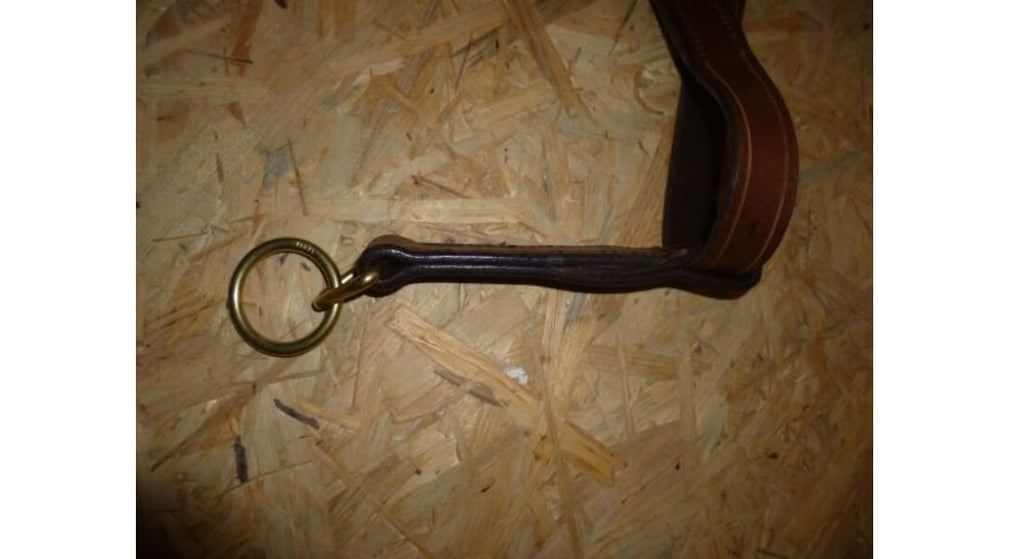
END
If you haven't done so as you progress, you can now beat your seams... 


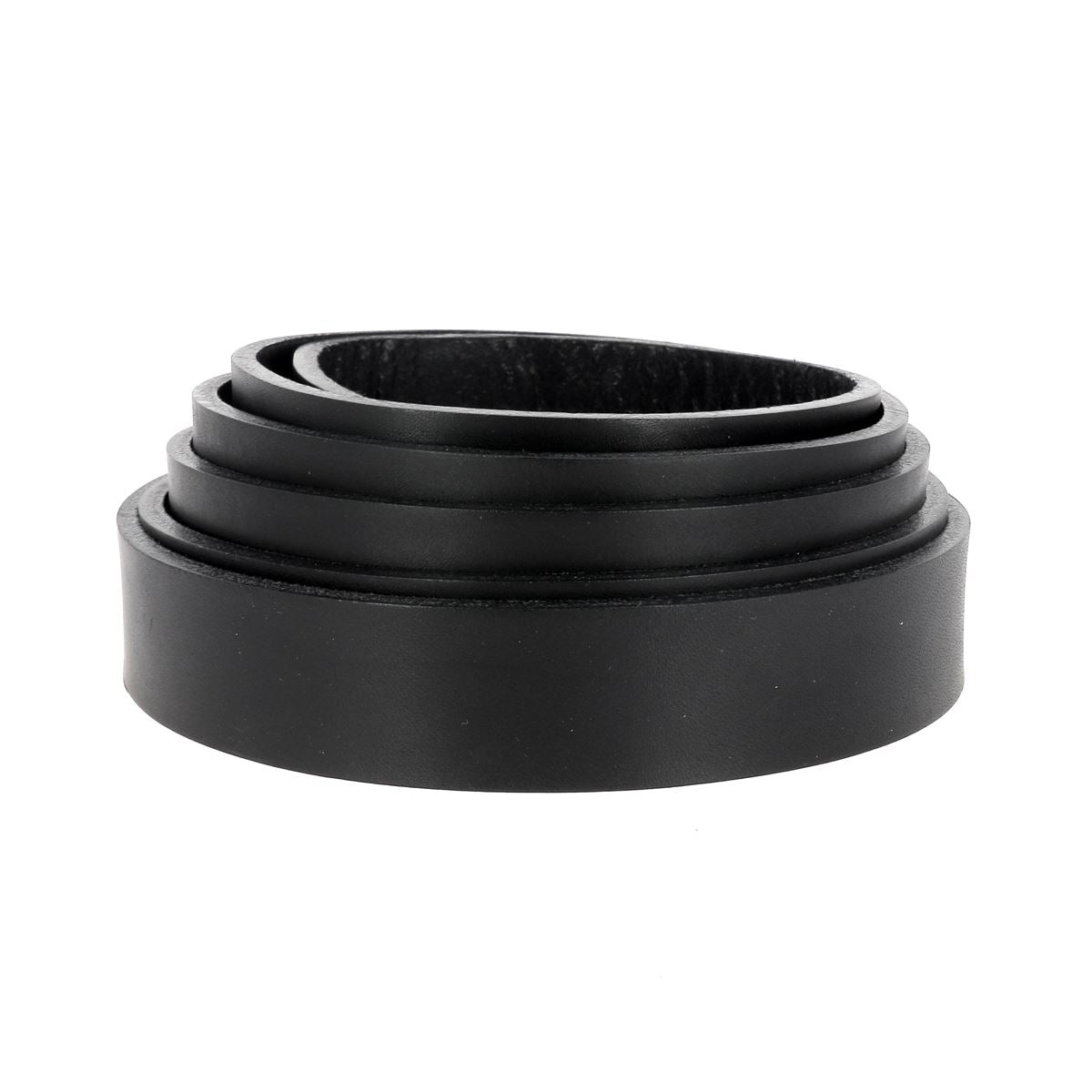


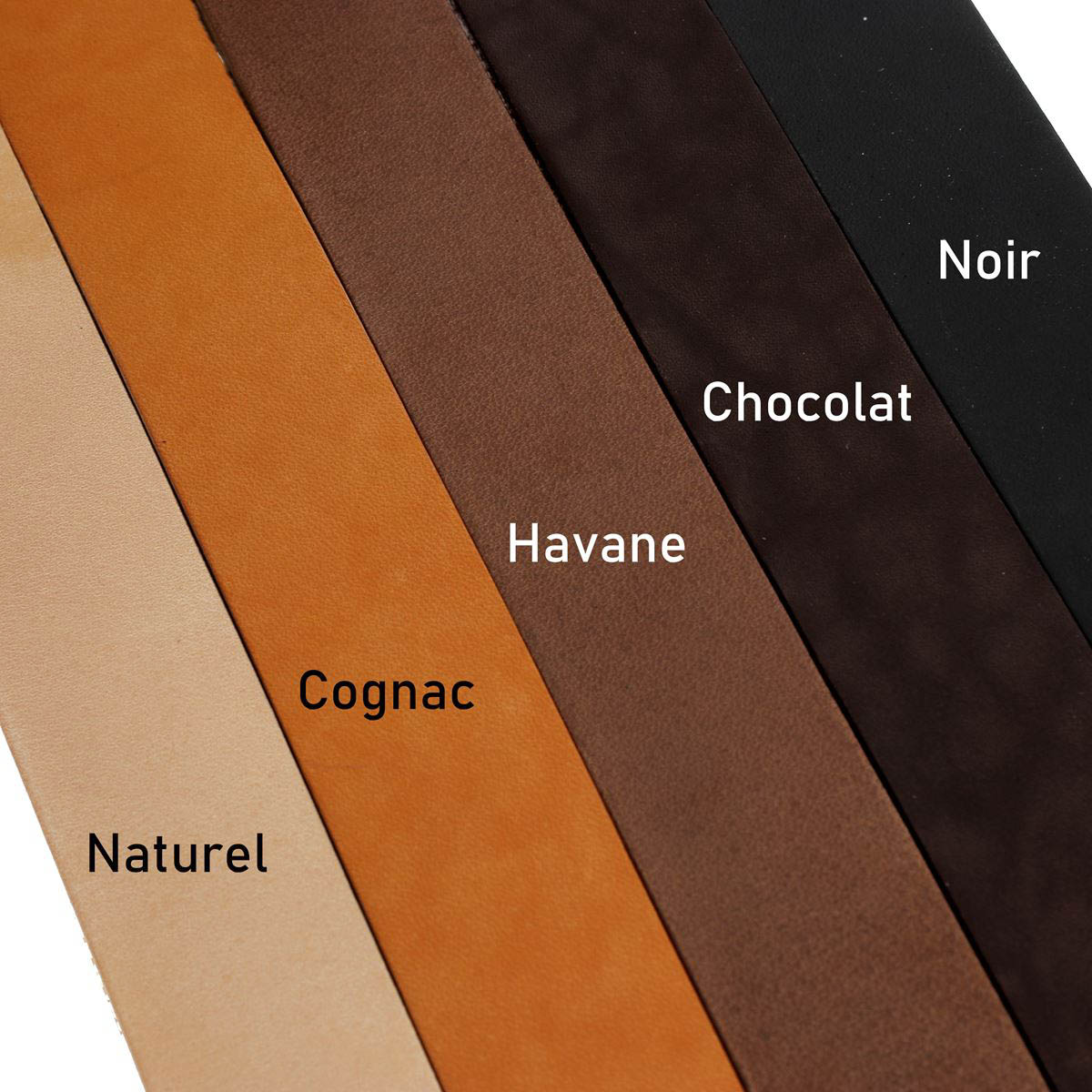
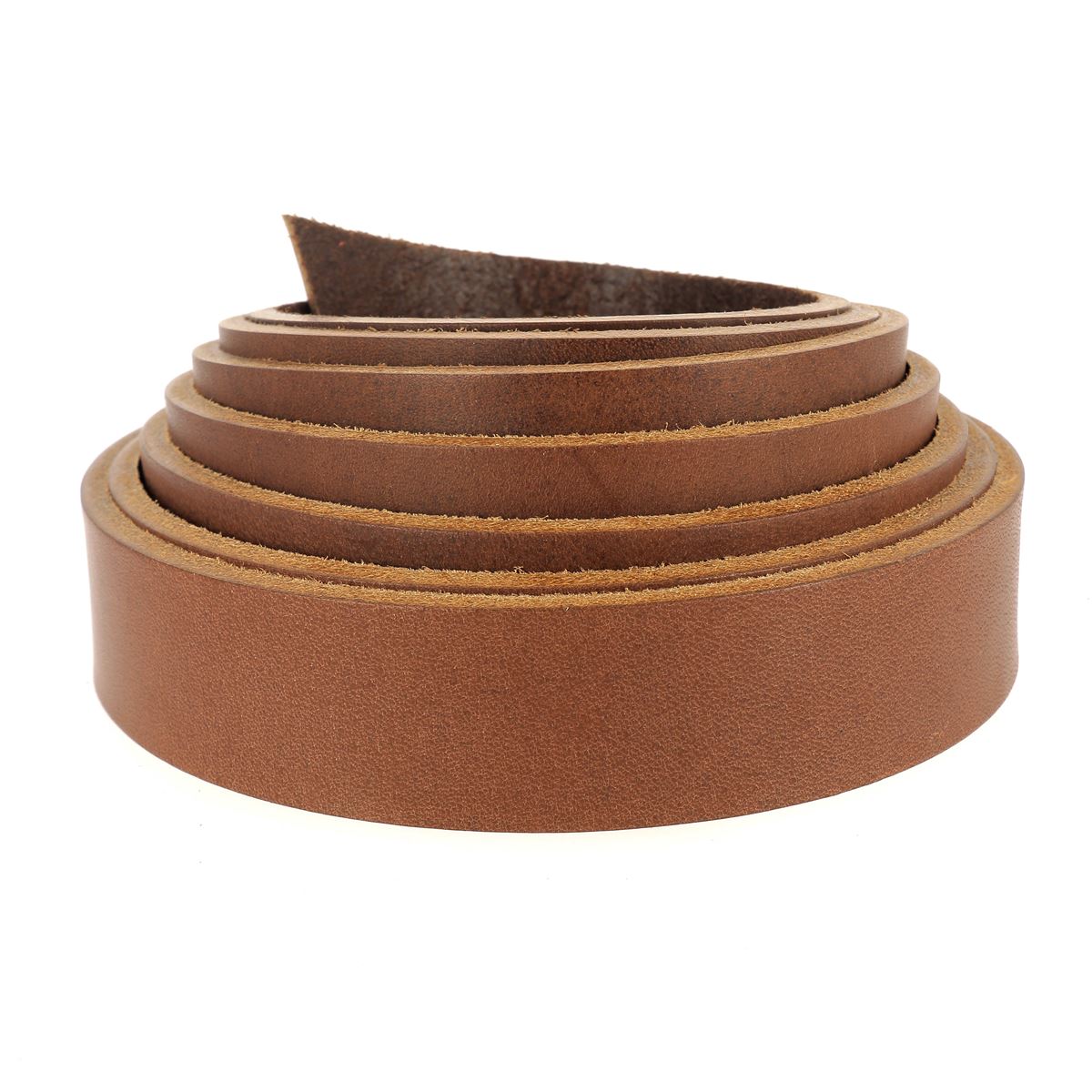
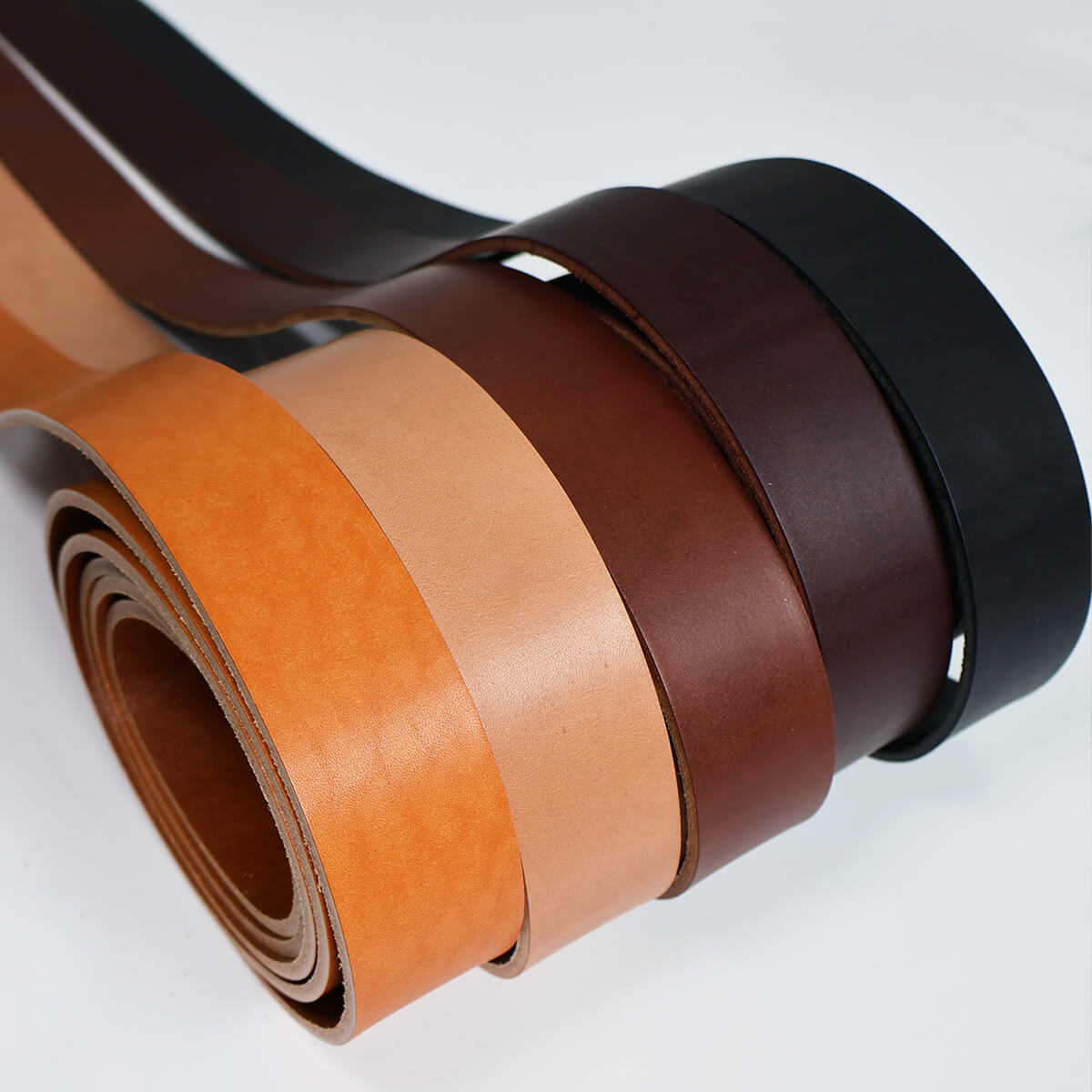
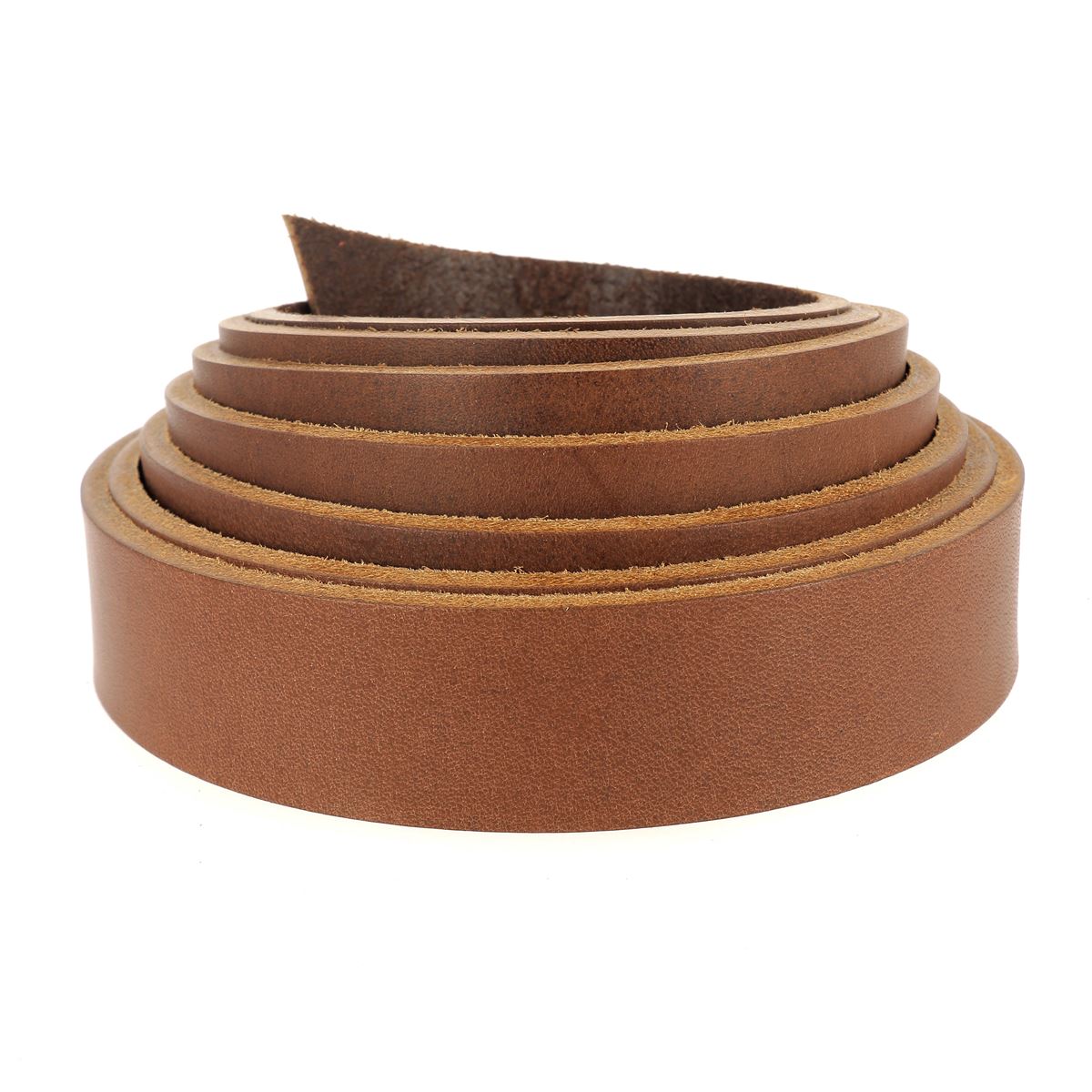
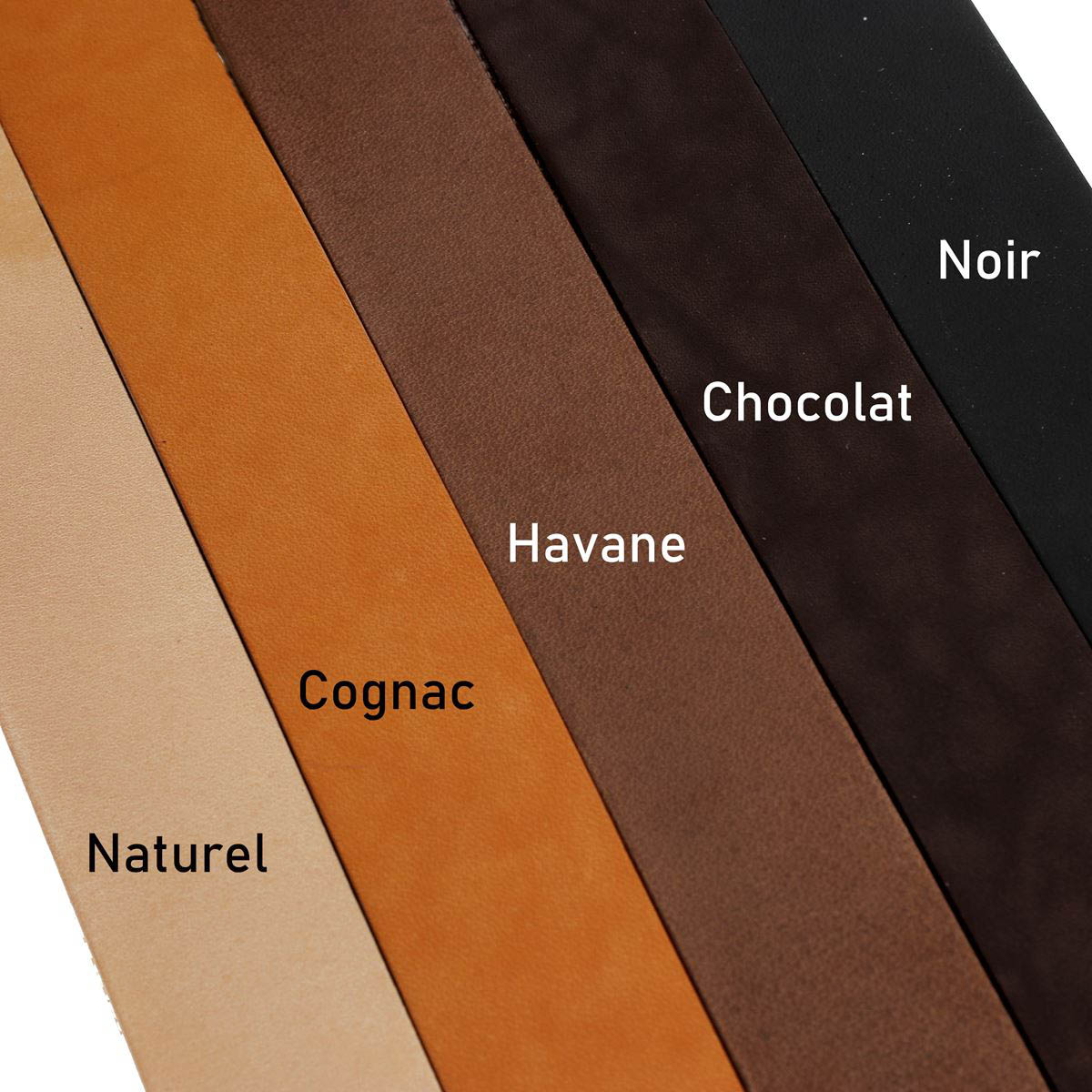
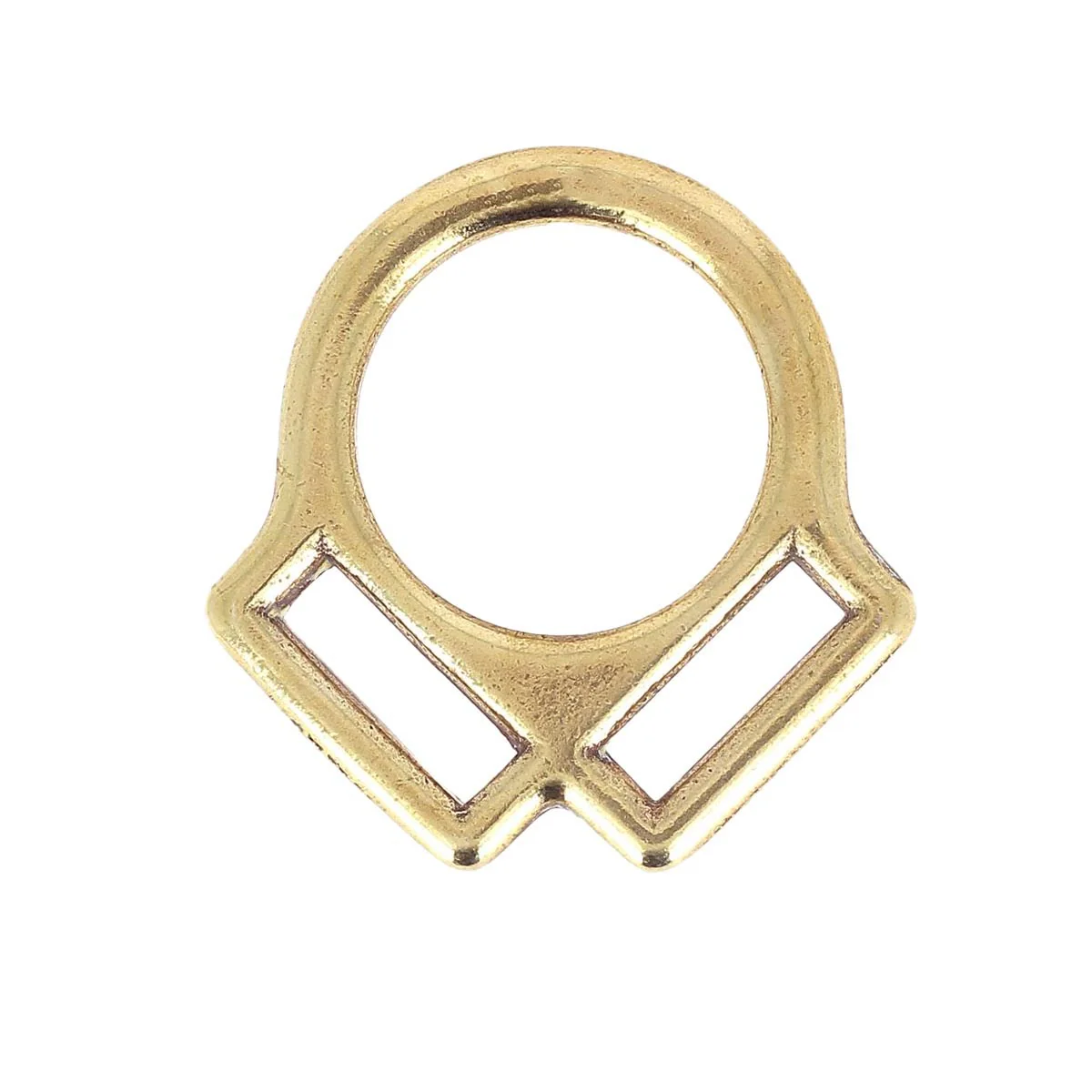
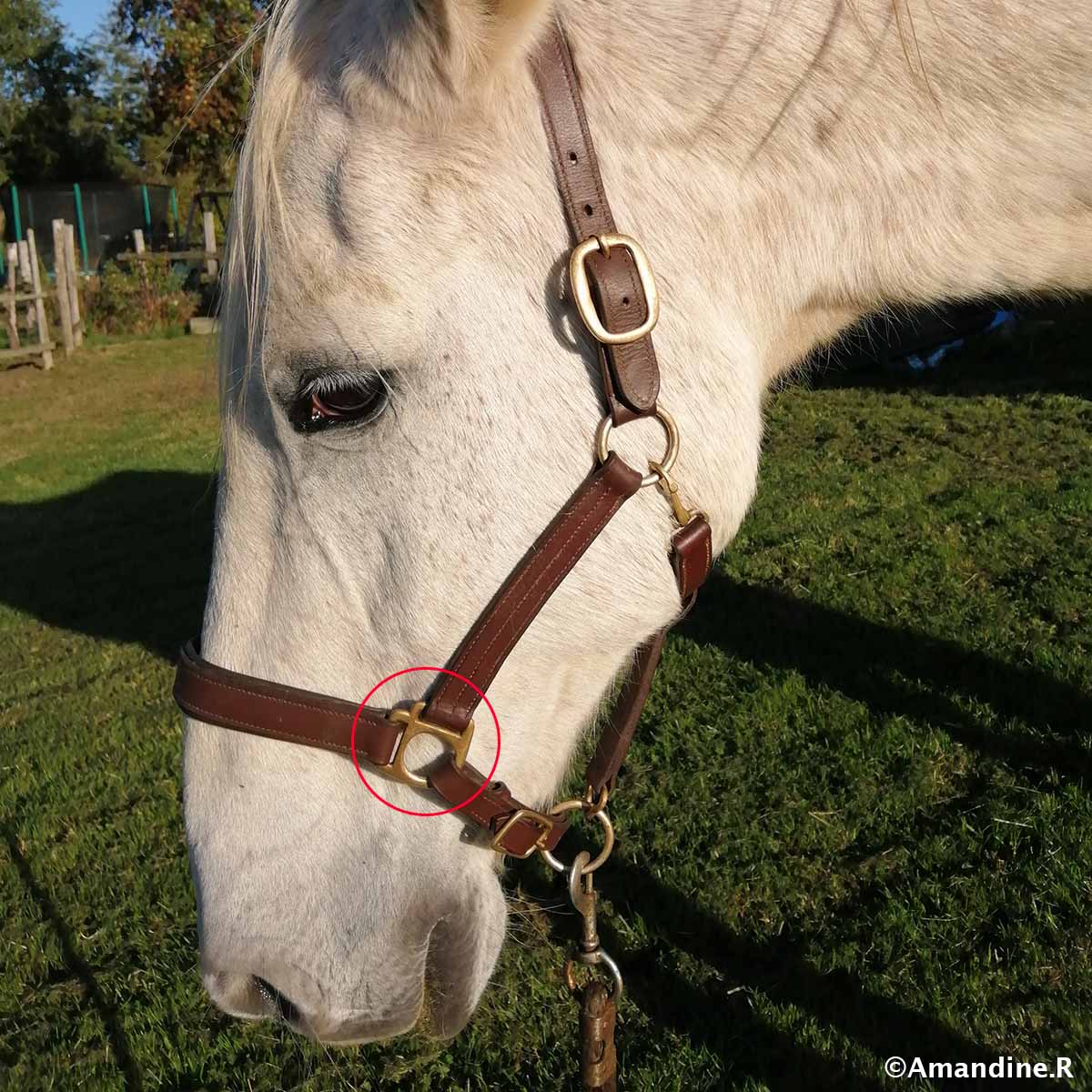
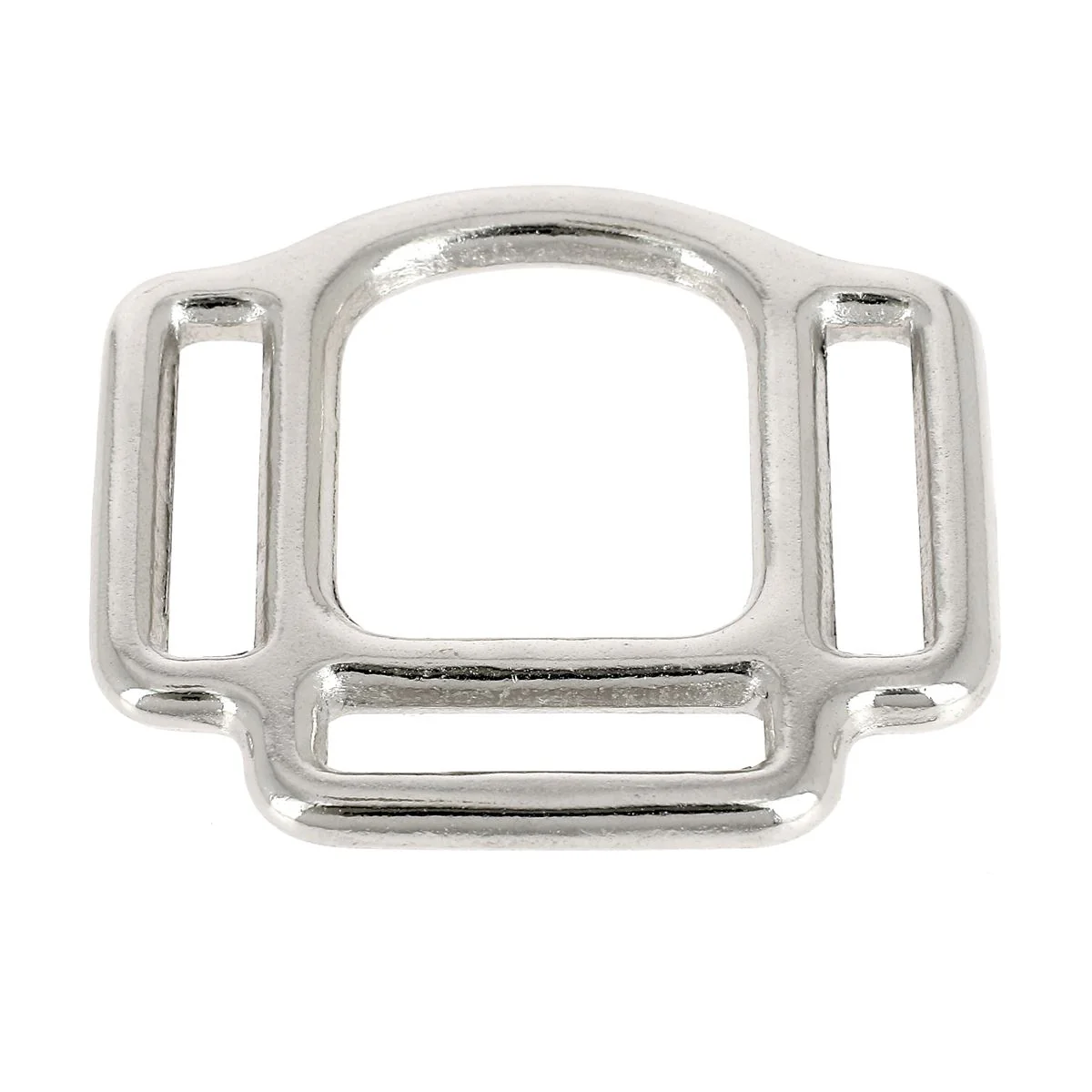




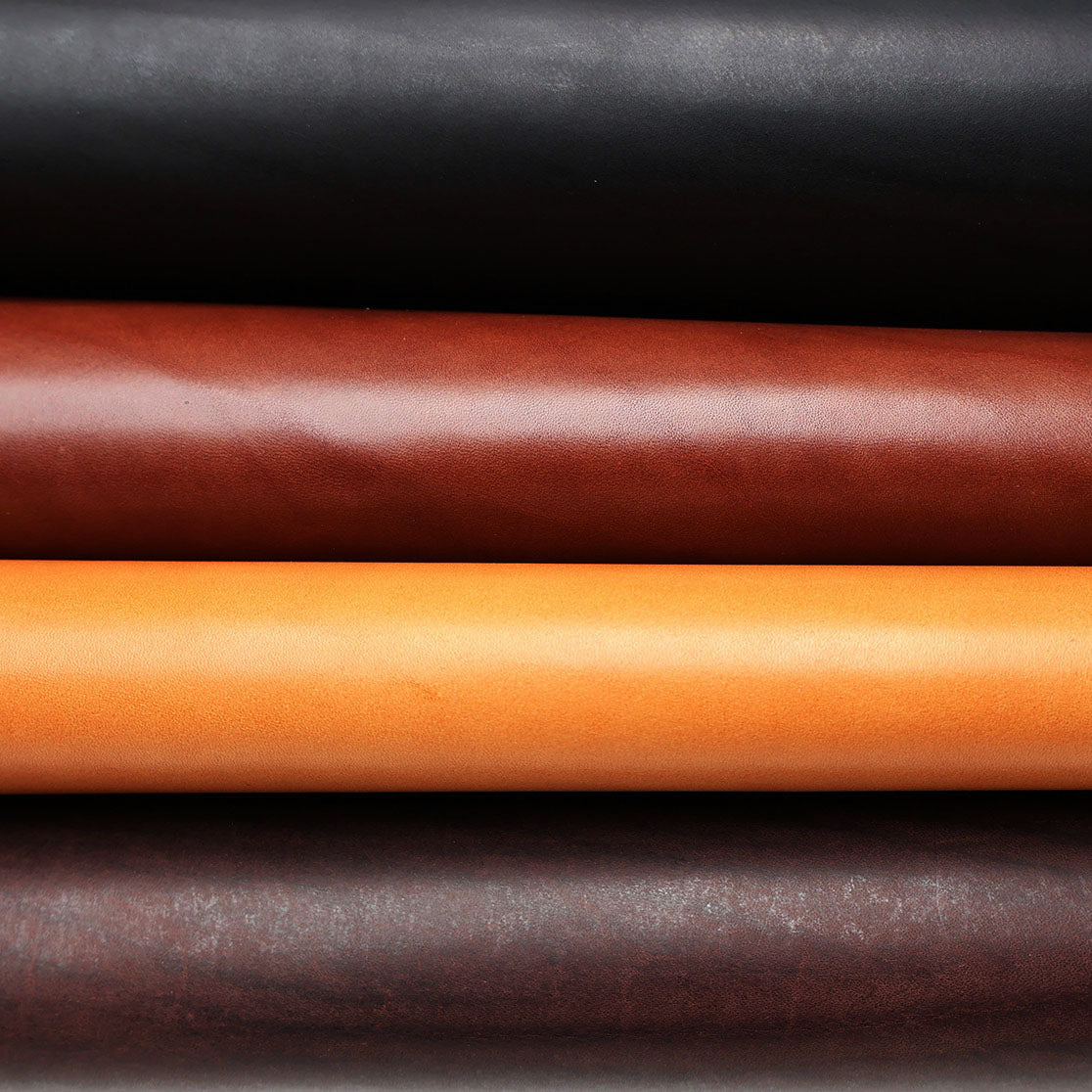







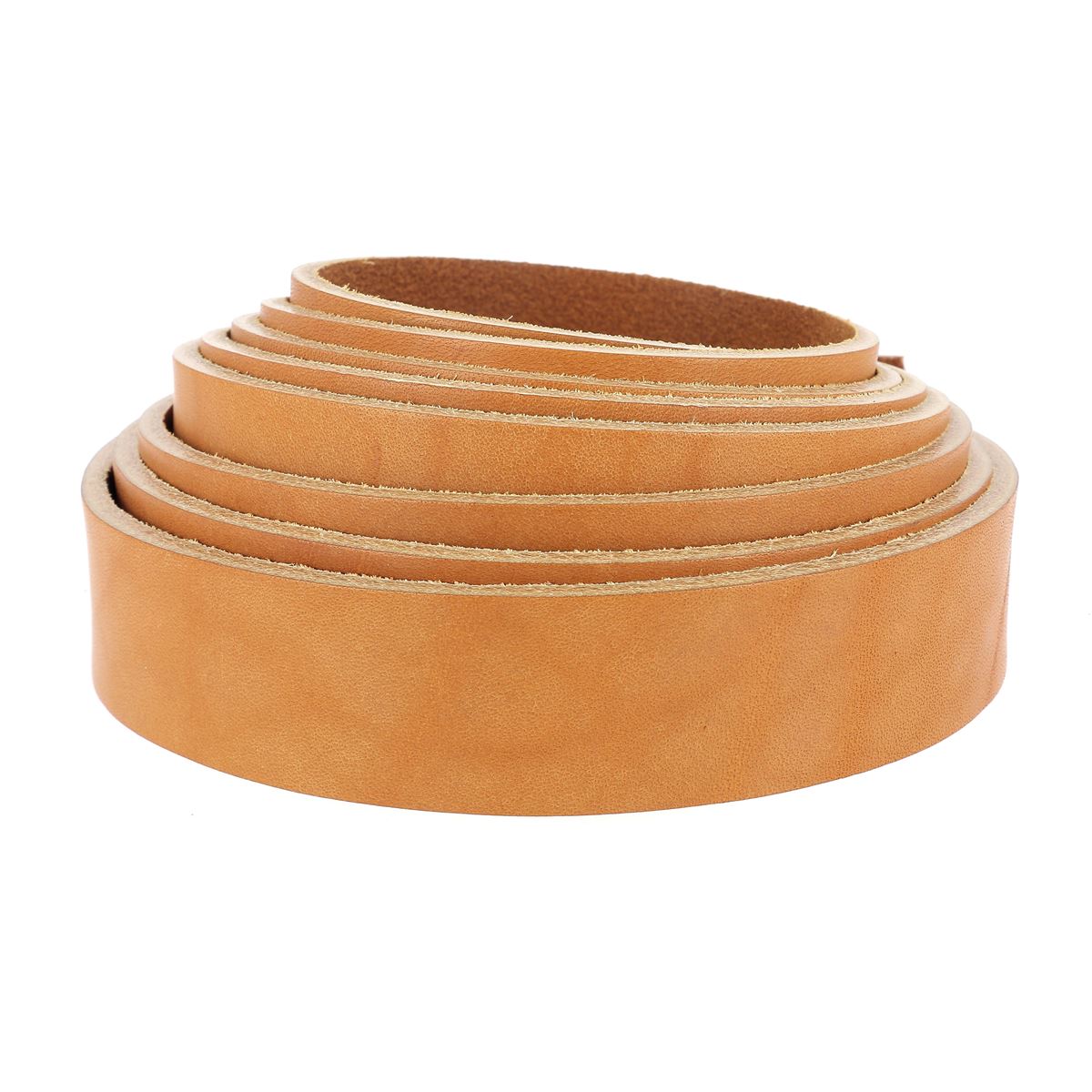
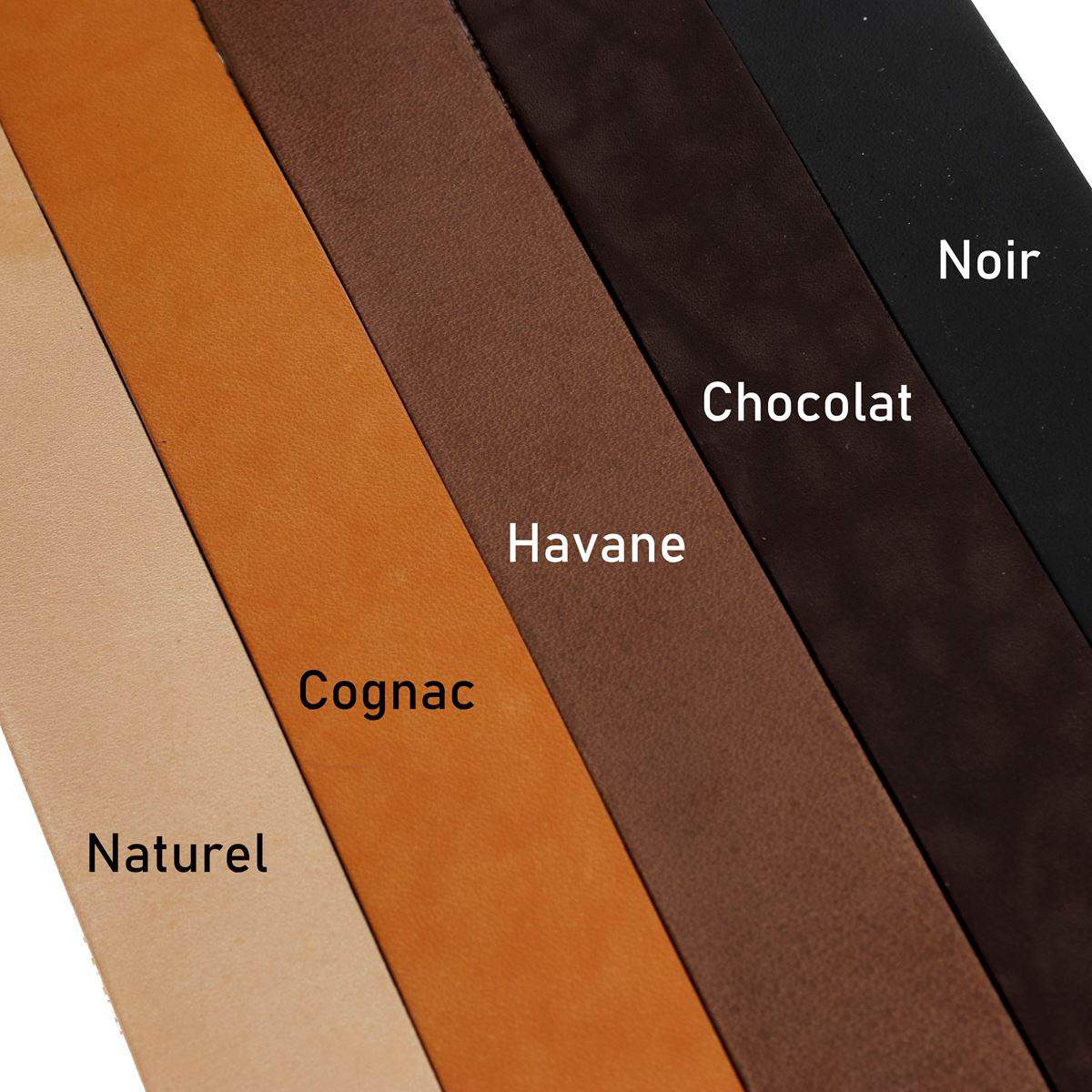
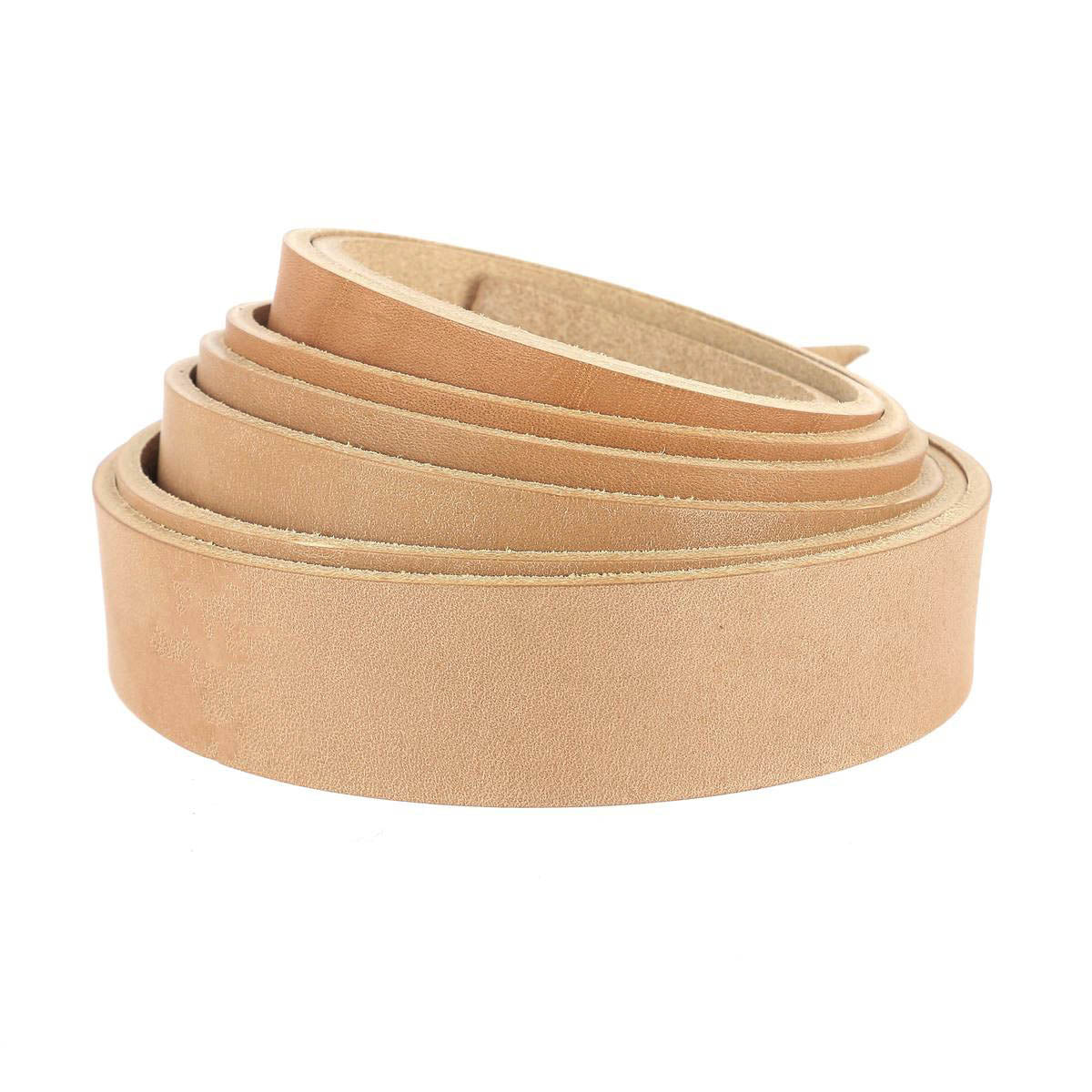

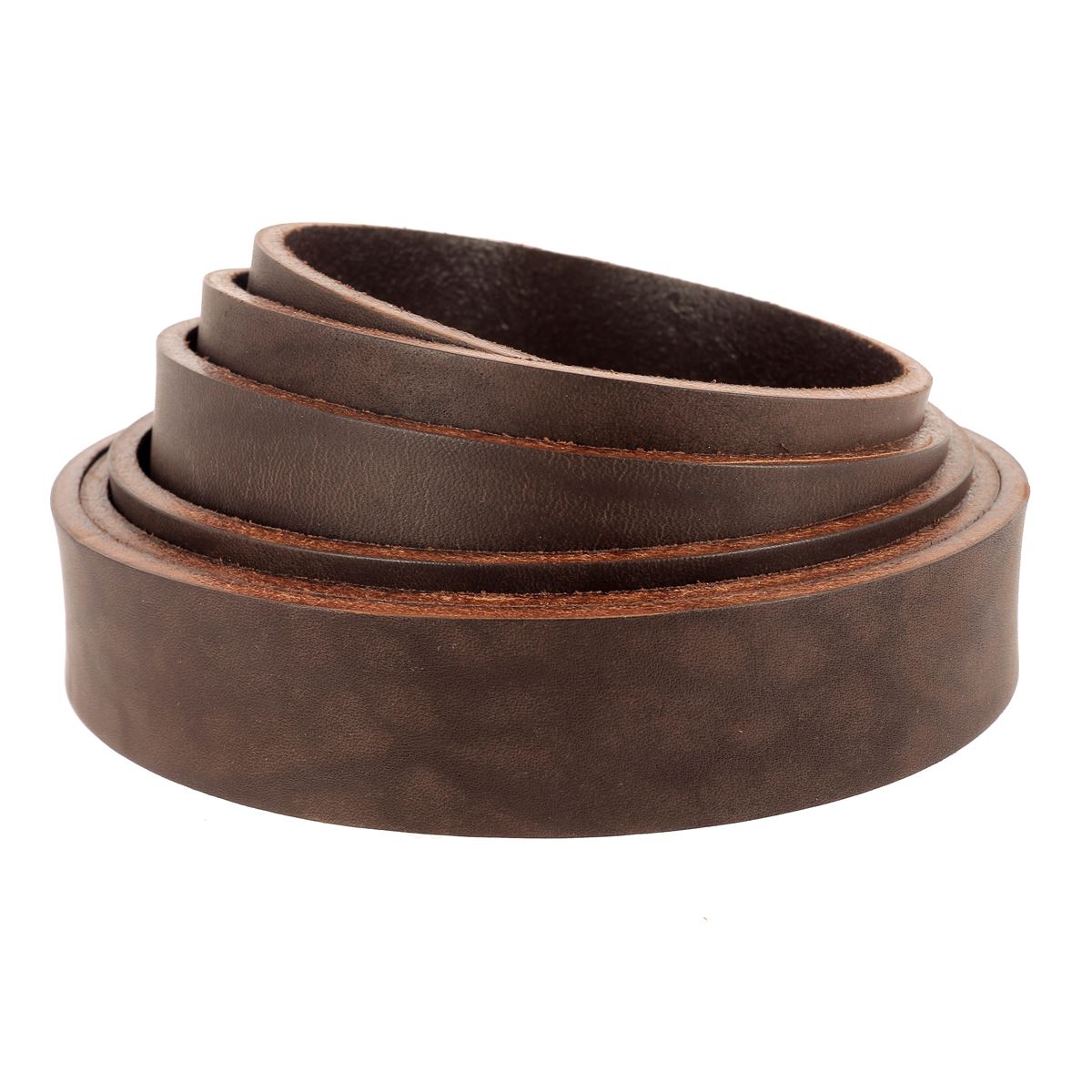
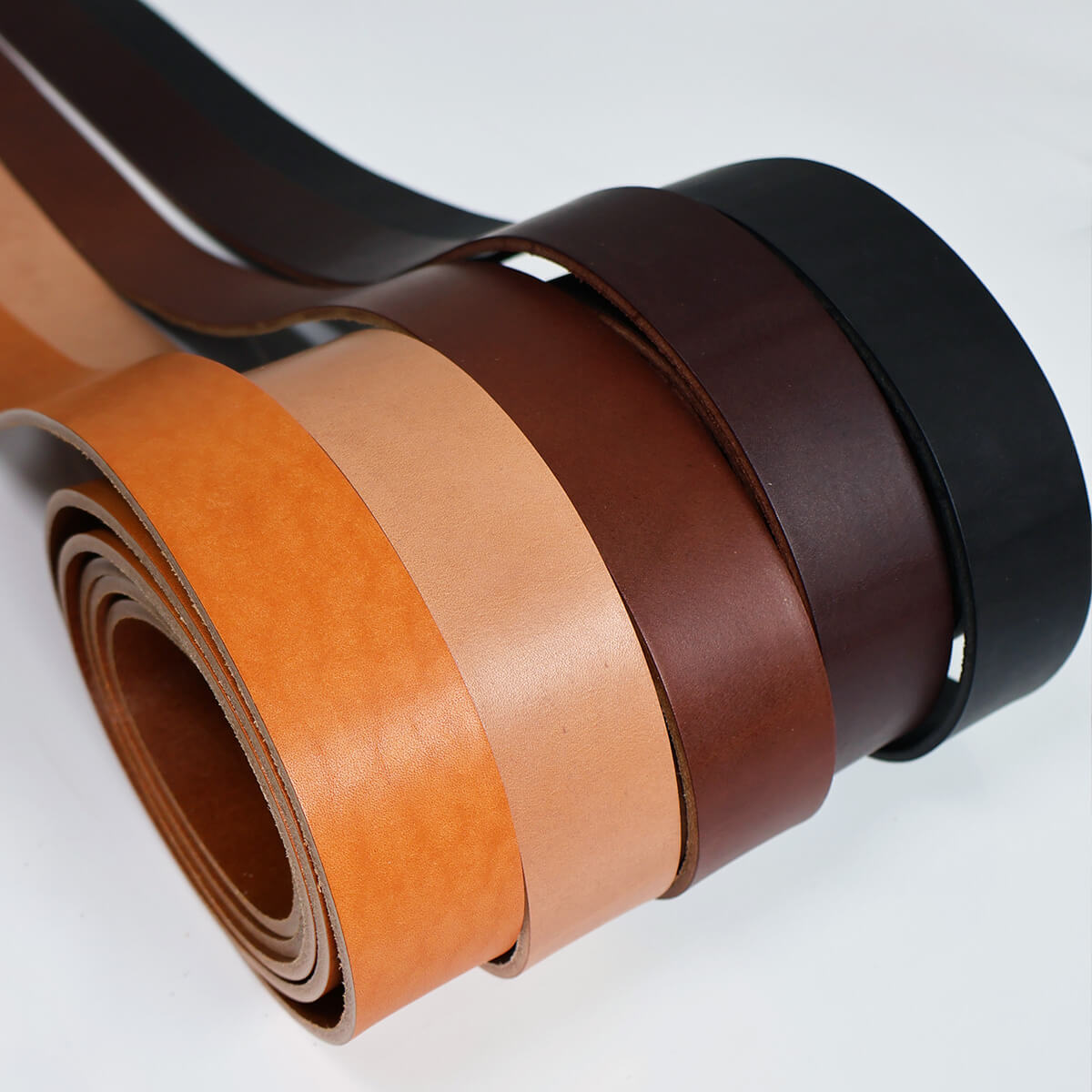
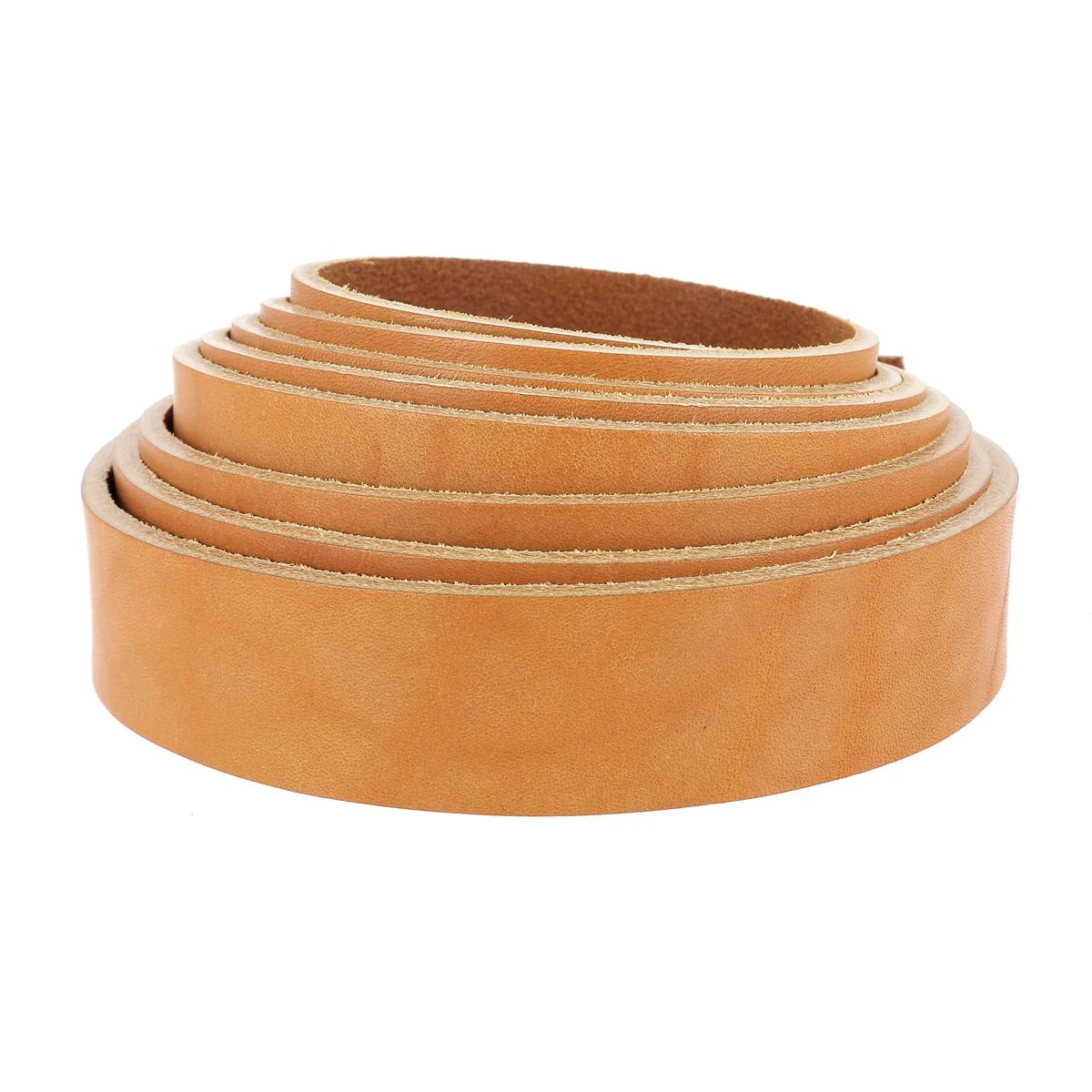
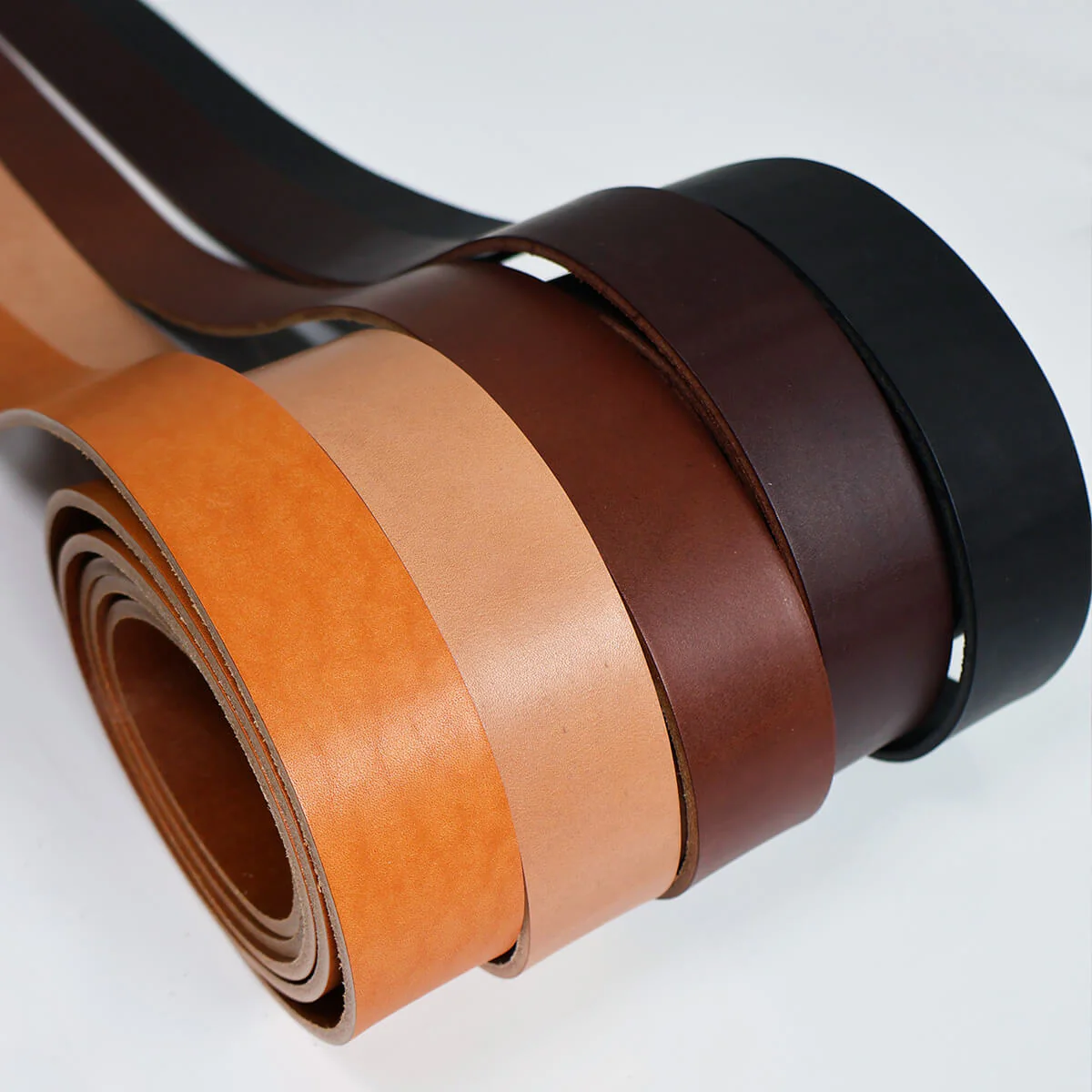


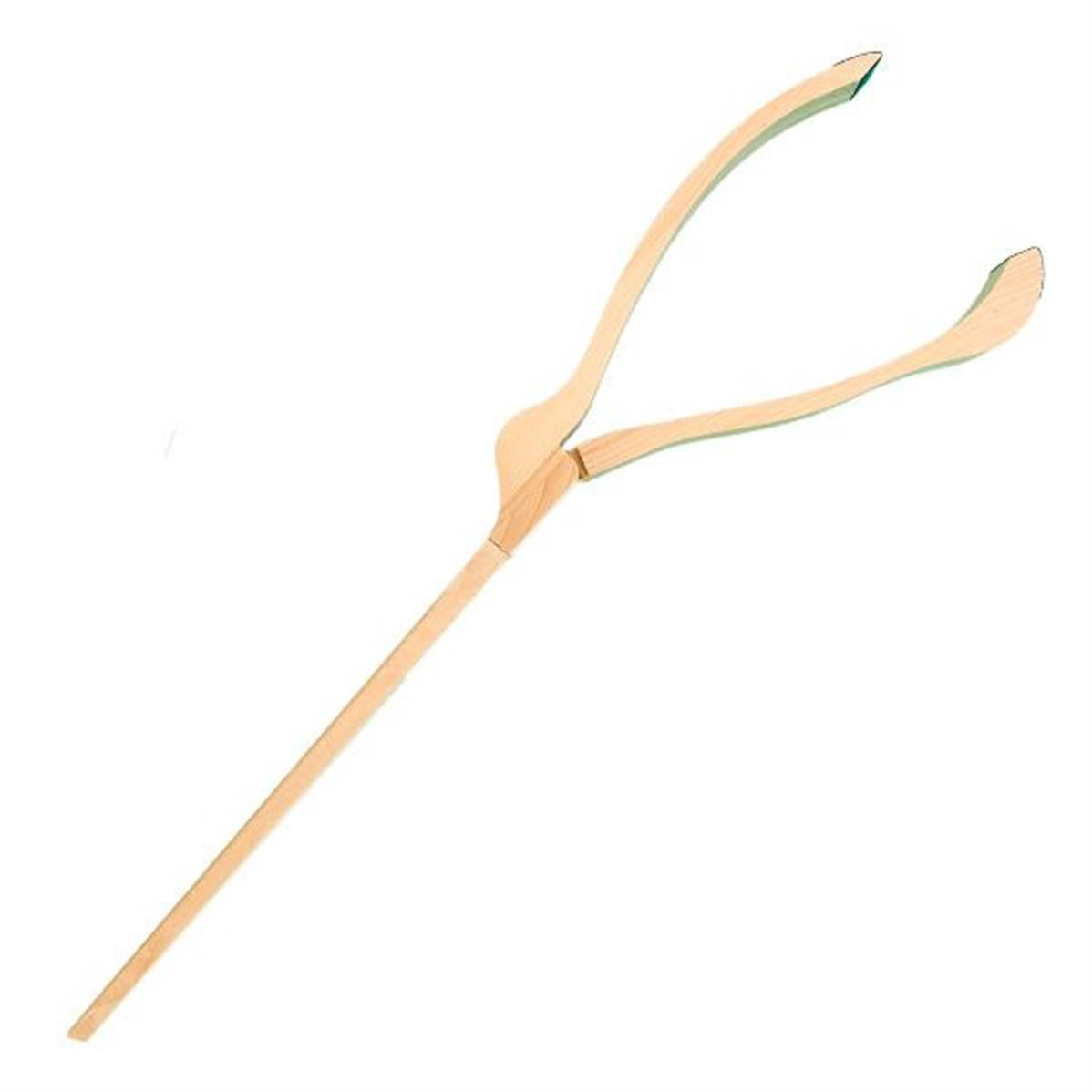


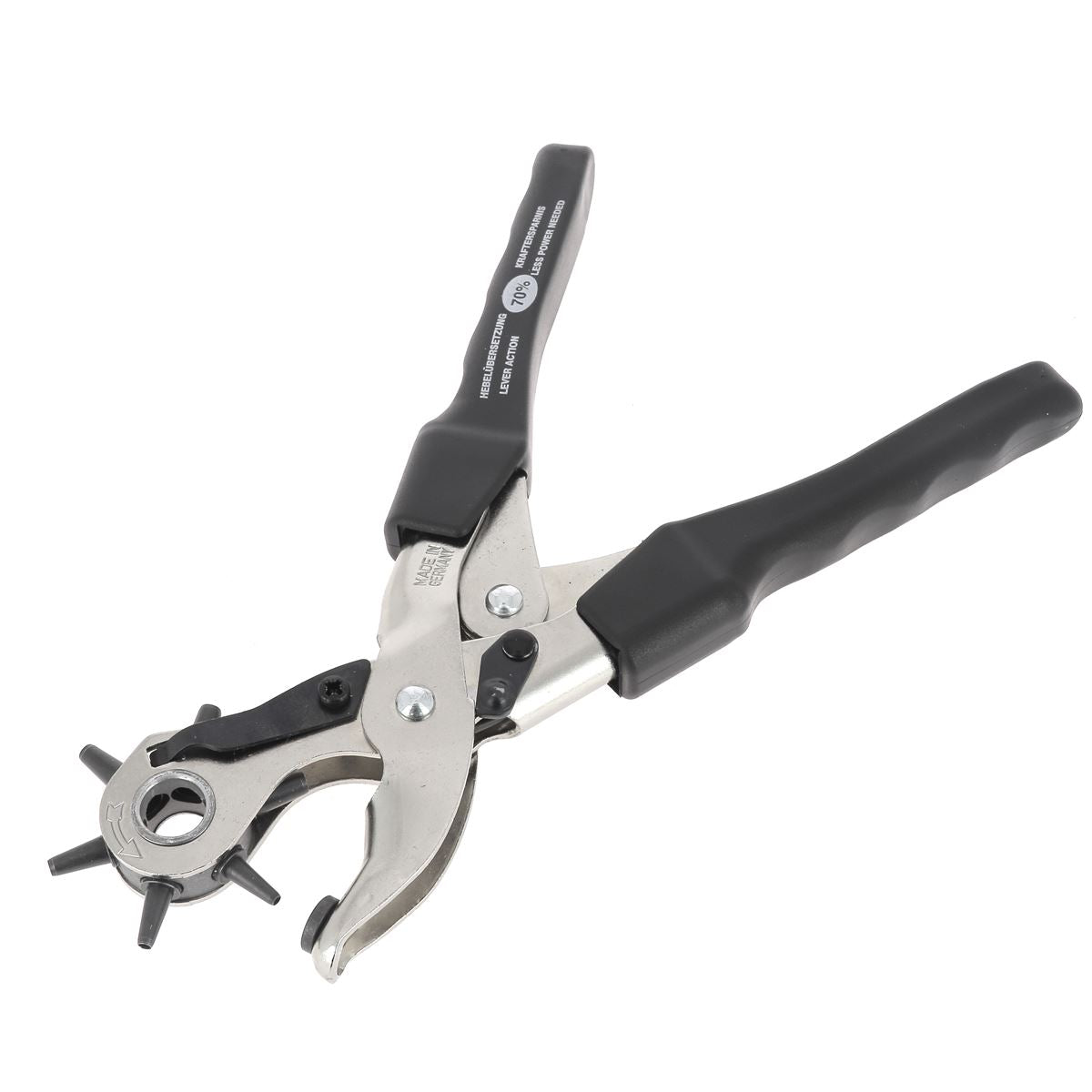

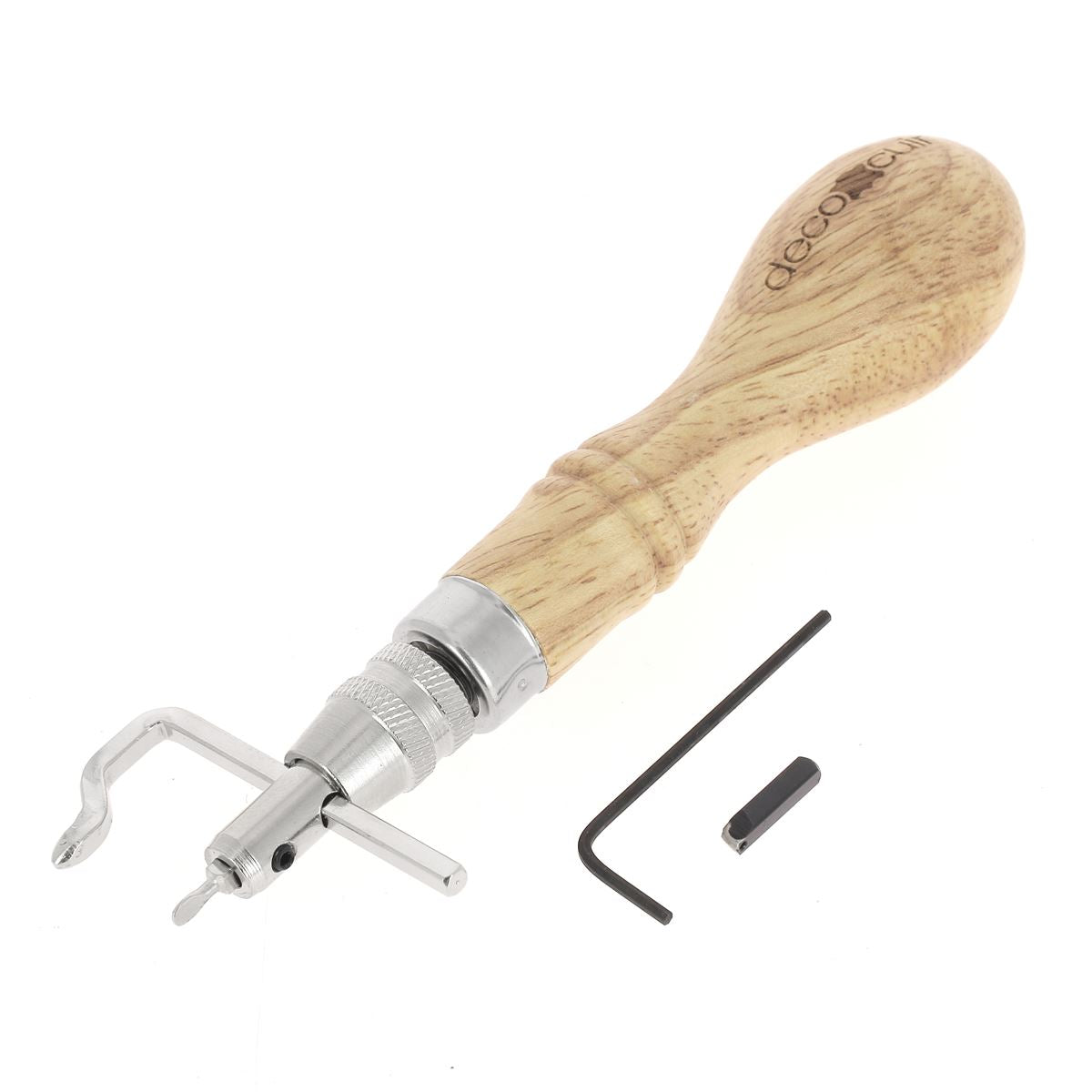

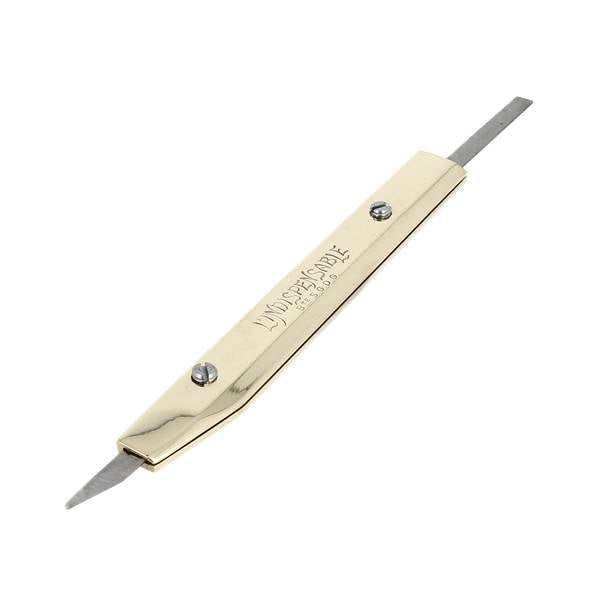

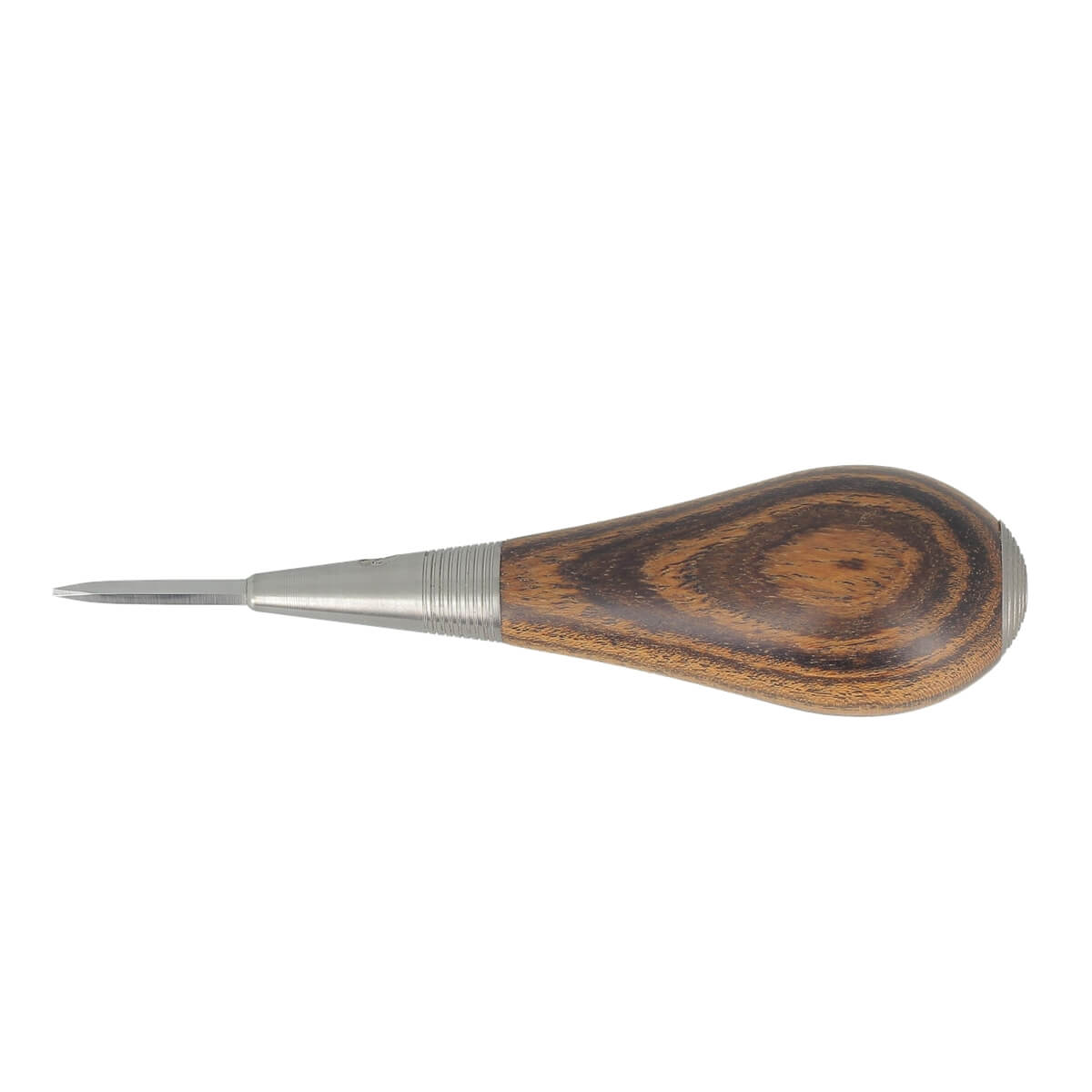

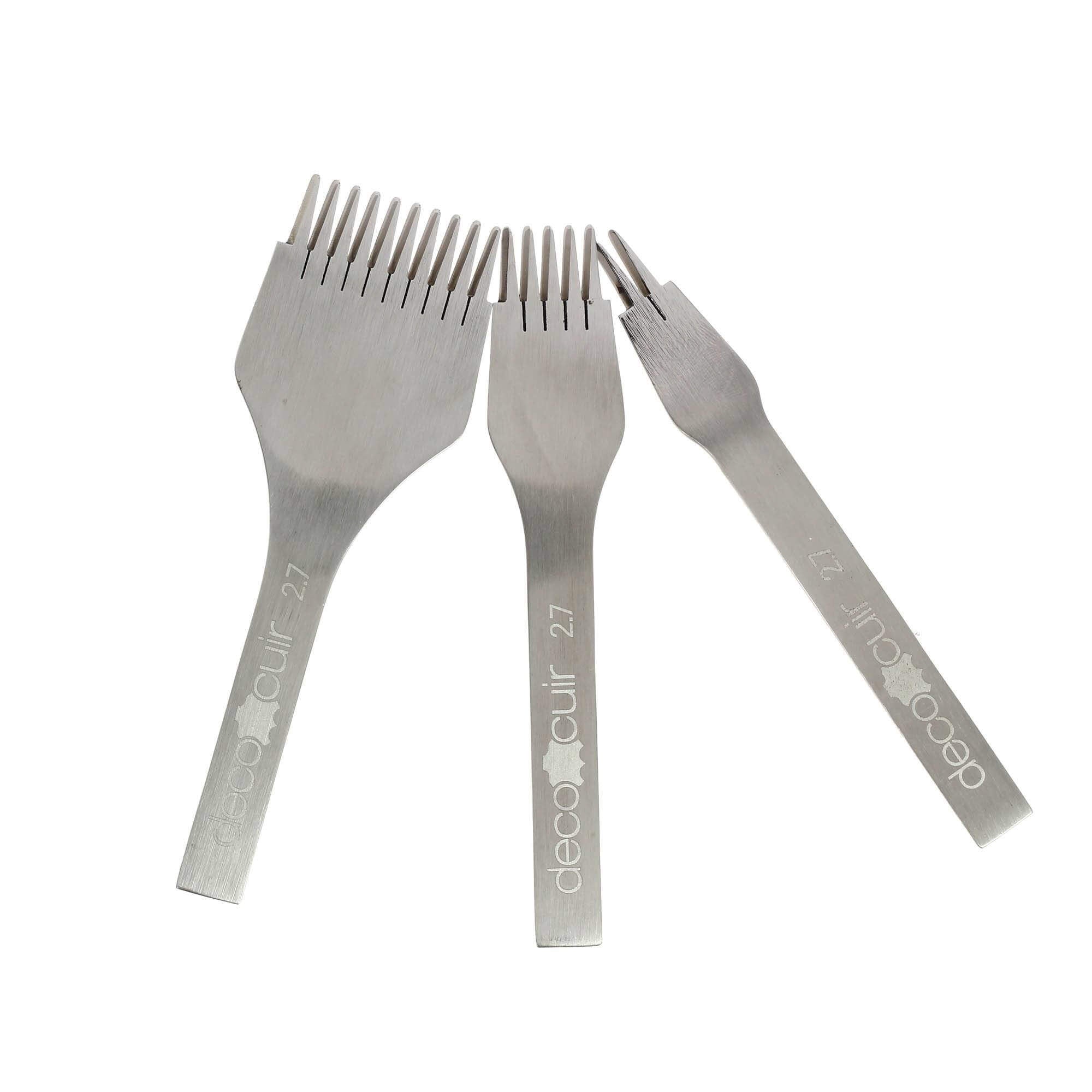
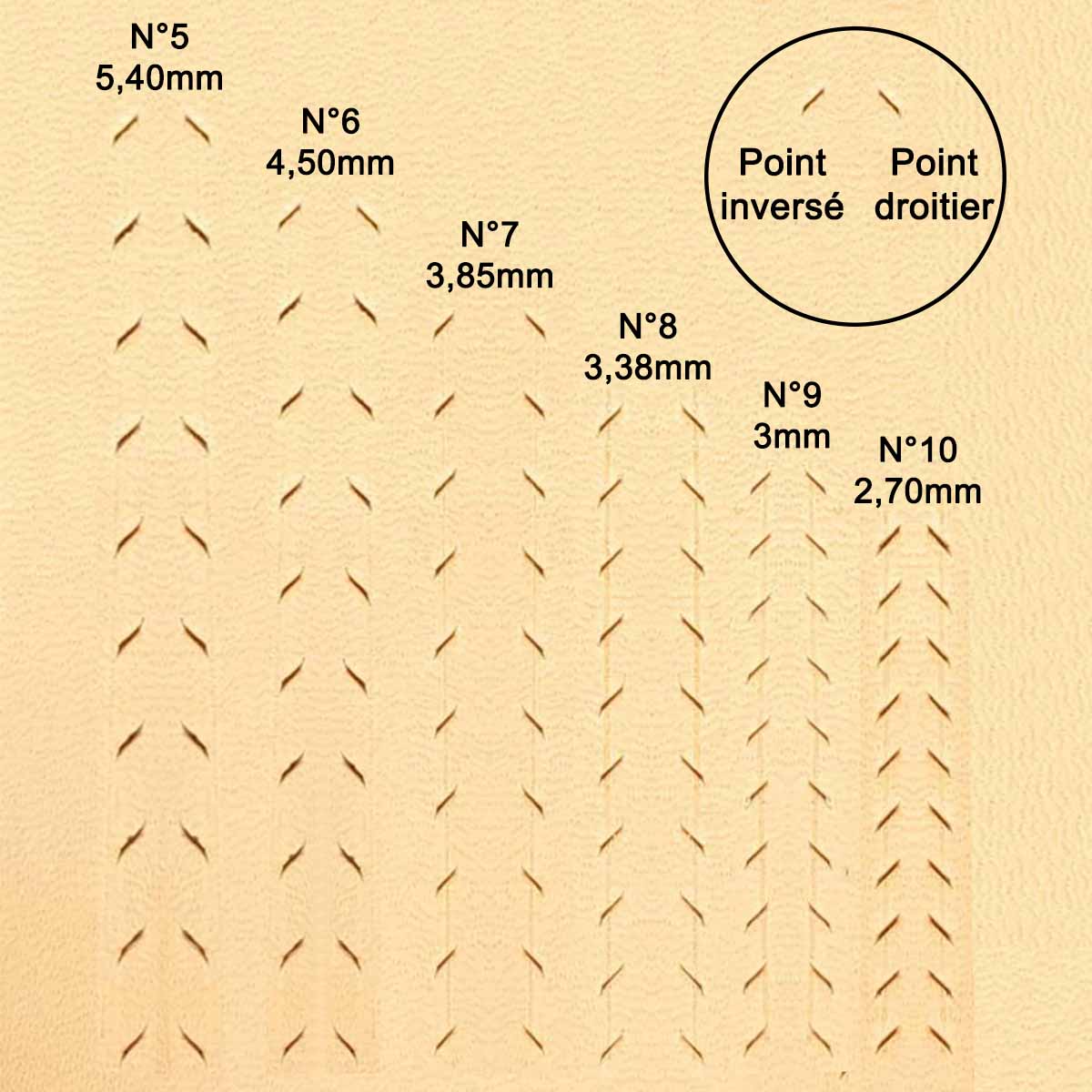


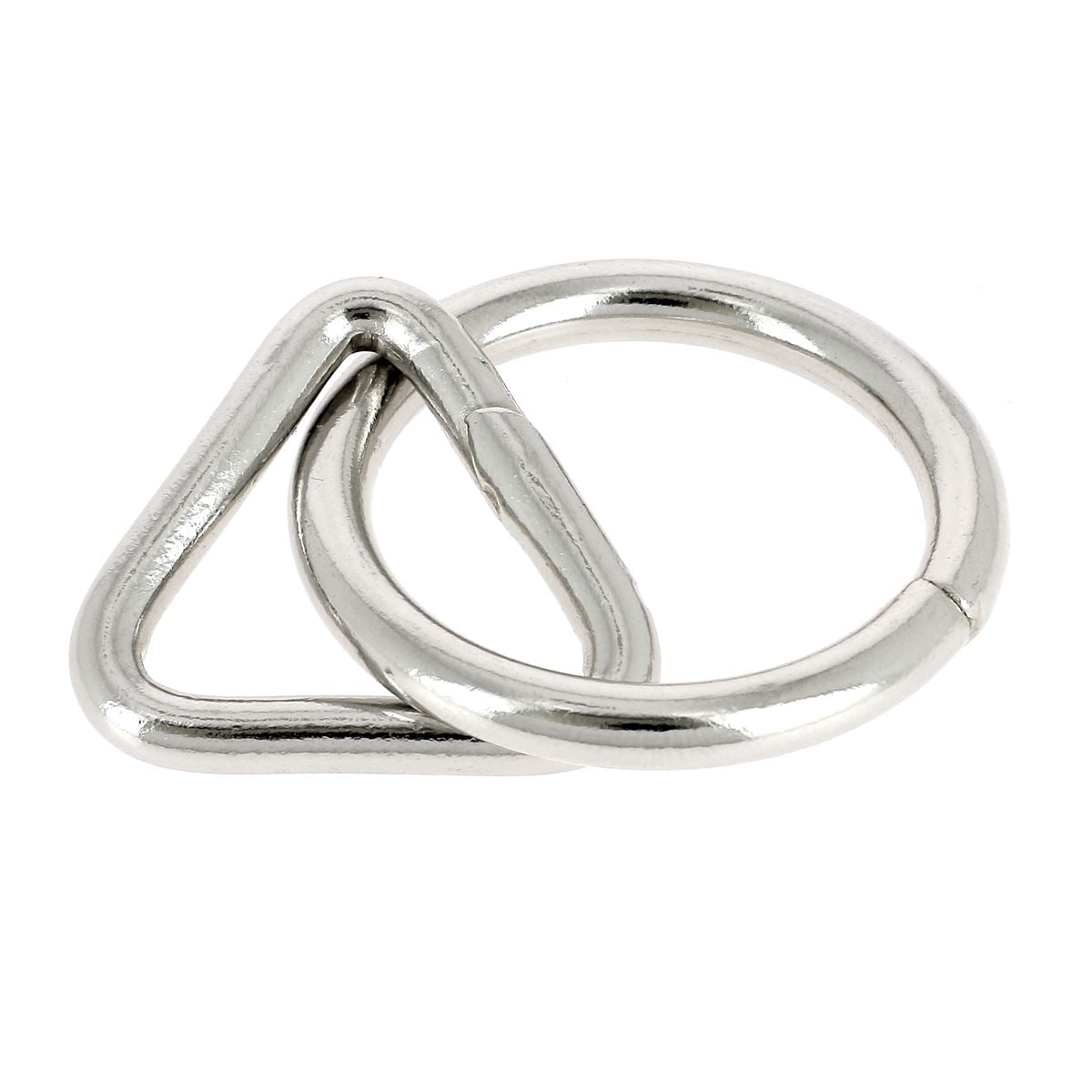
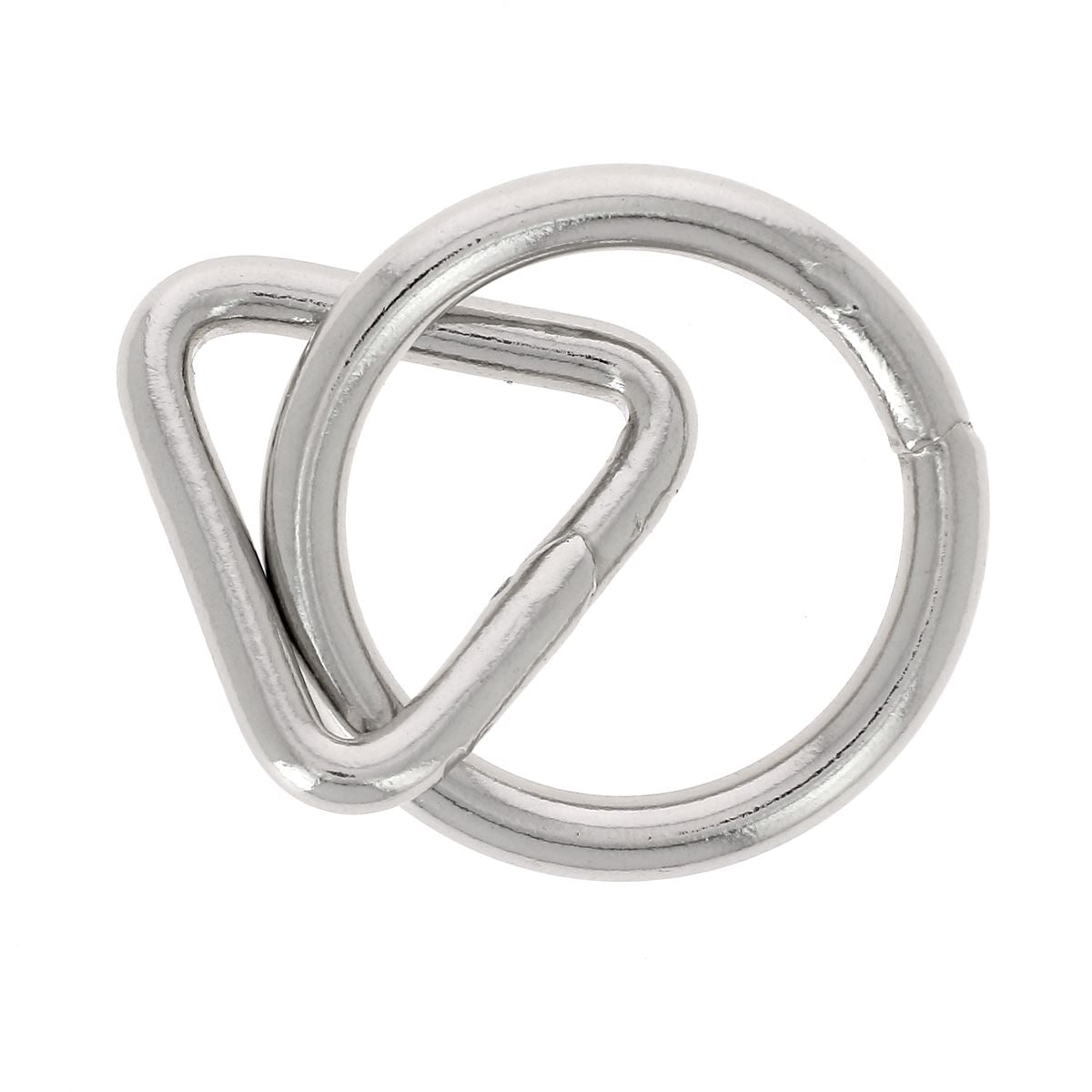
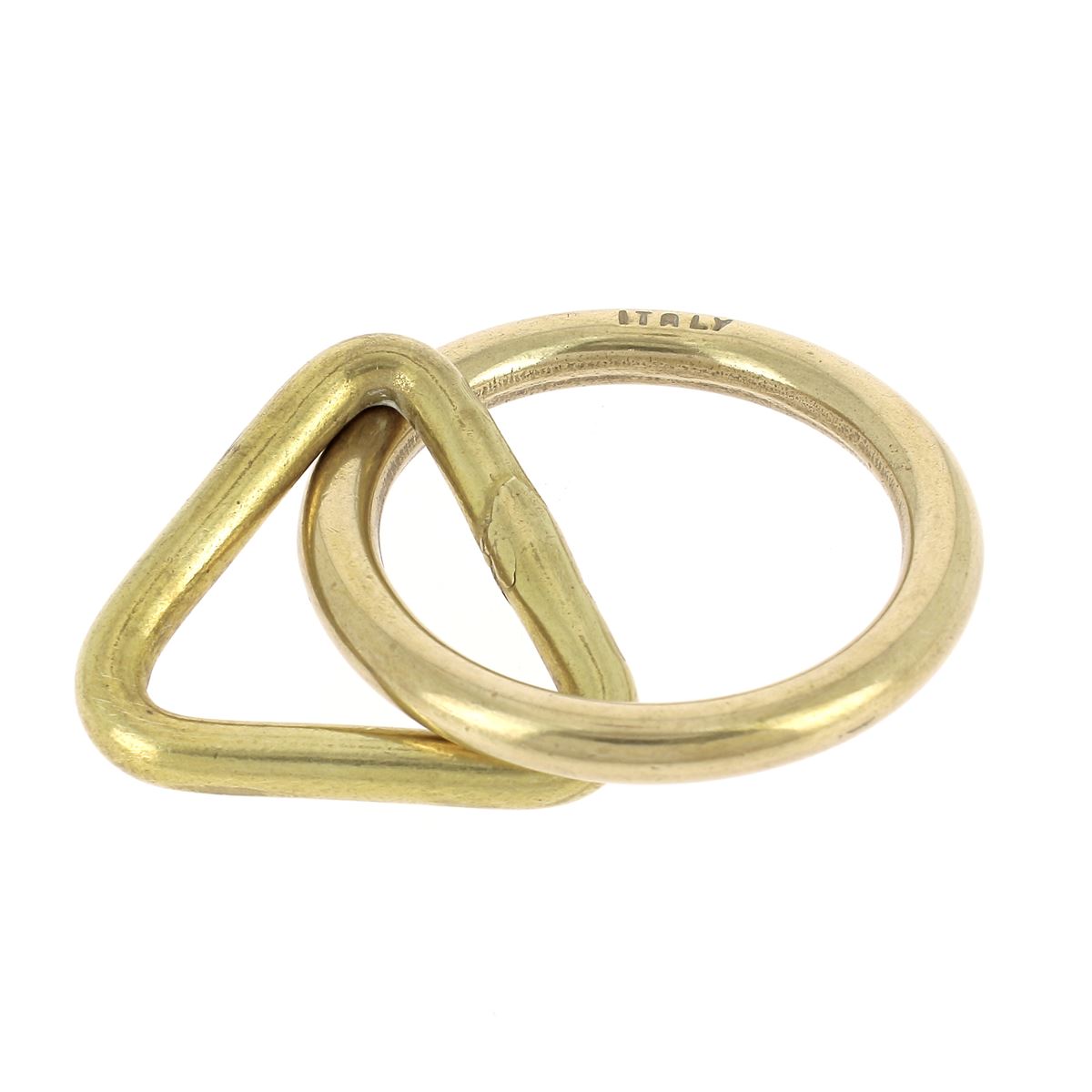








2 comments
Anonymous
Bonjour Cylène,
Merci encore pour votre tutoriel, il est top !
L’équipe Deco Cuir
Cylène
Bonjour, je suis ravie de voir que mon tutoriel est toujours en ligne, et a été utilisé avec succès!
Belles réalisations bravo !